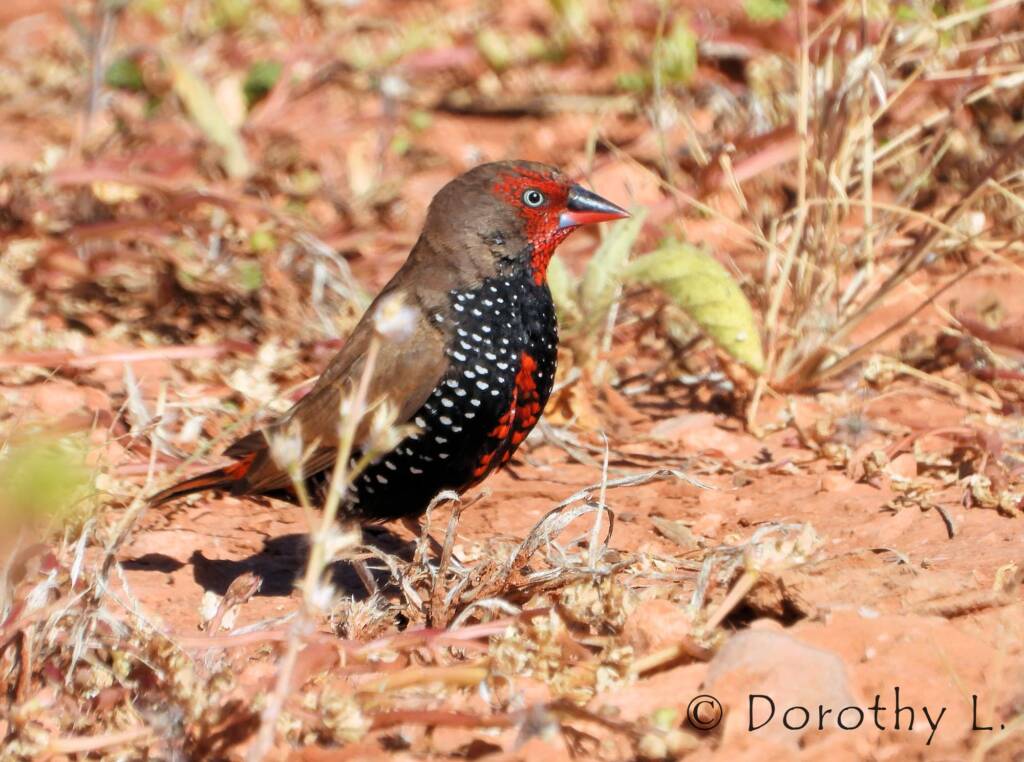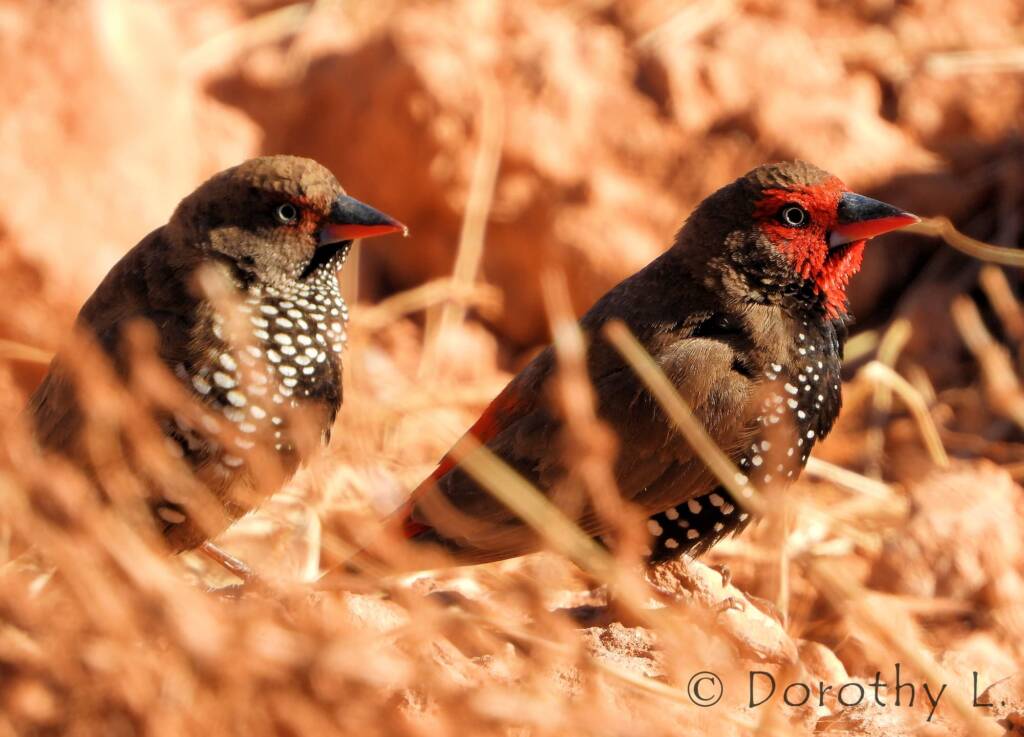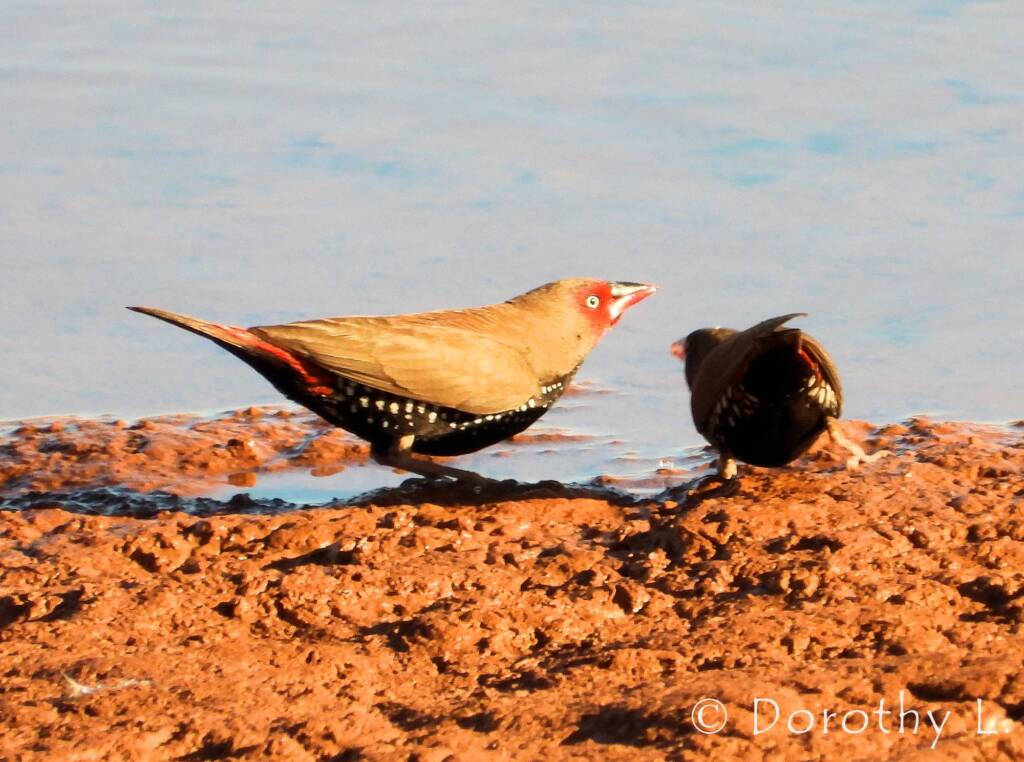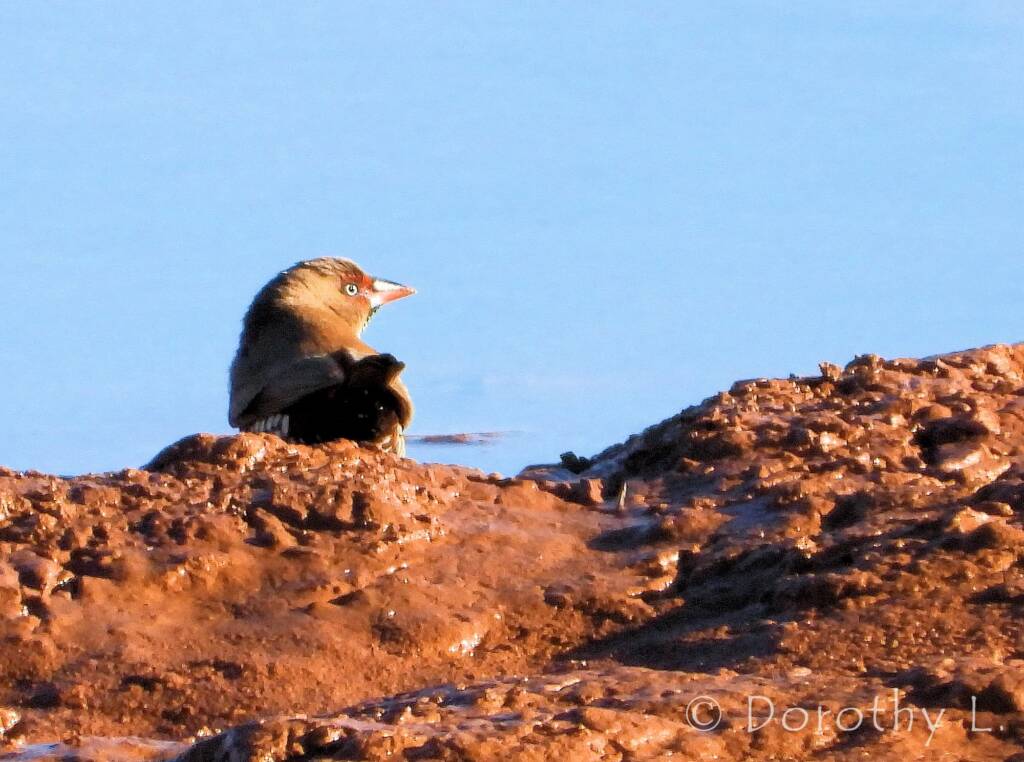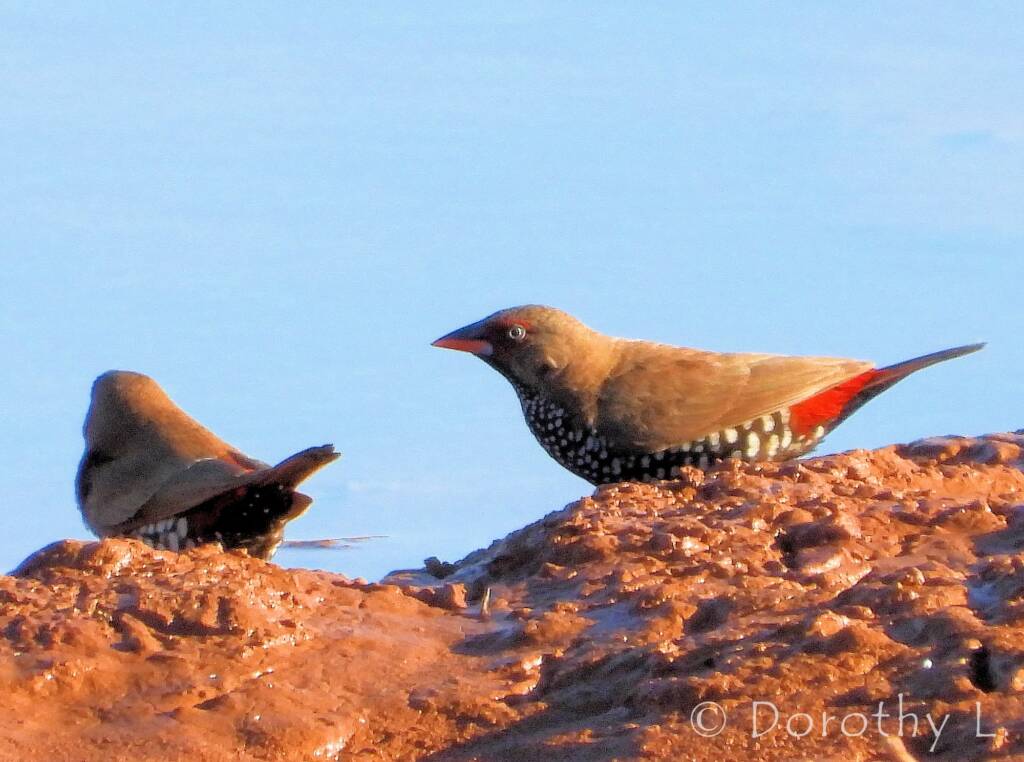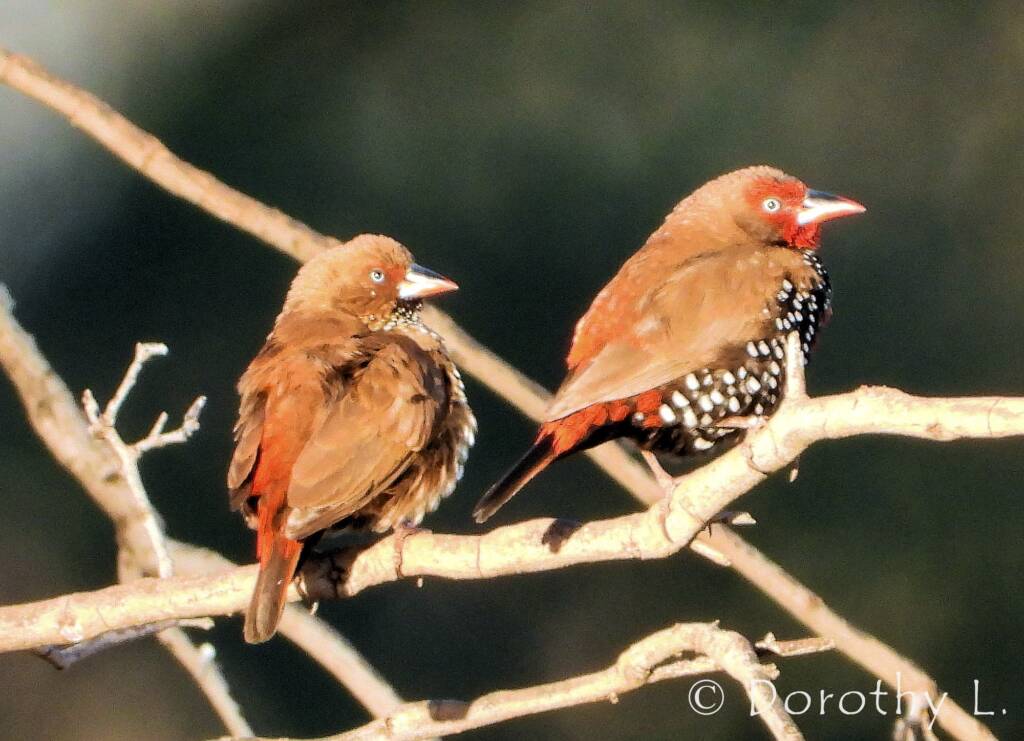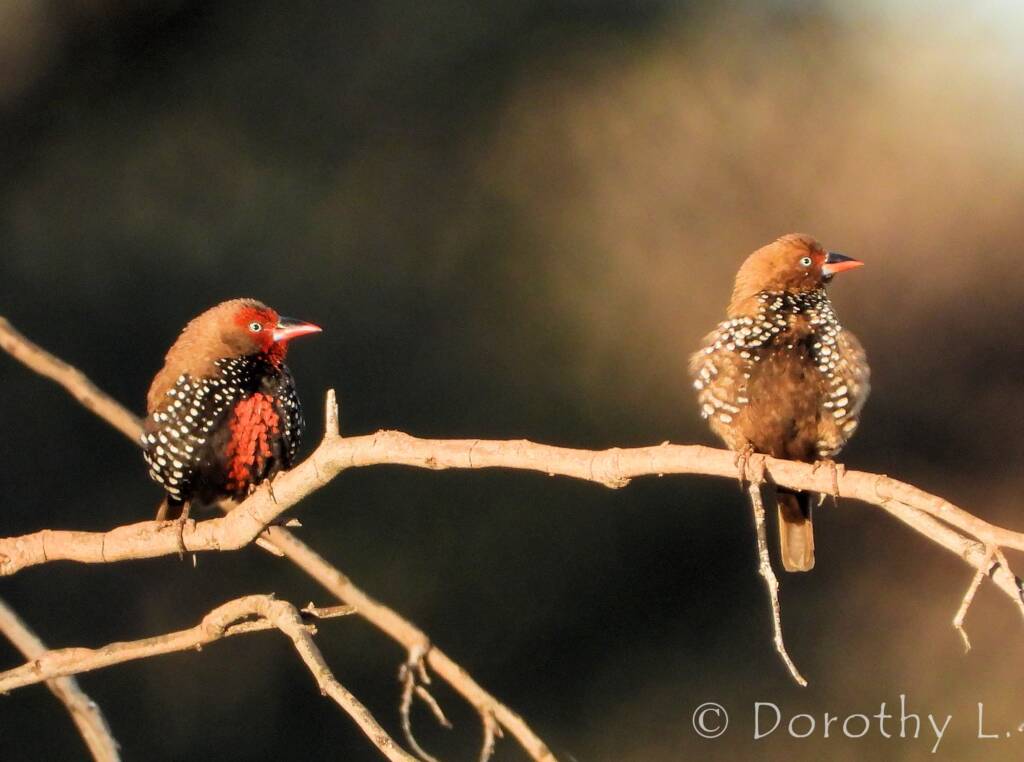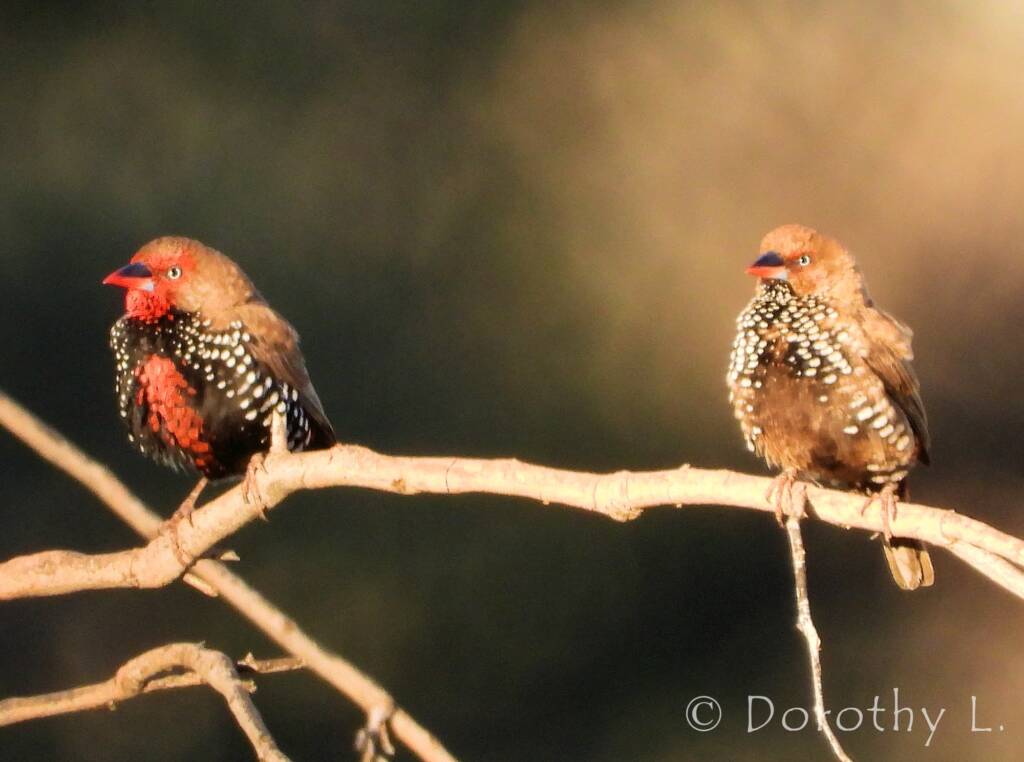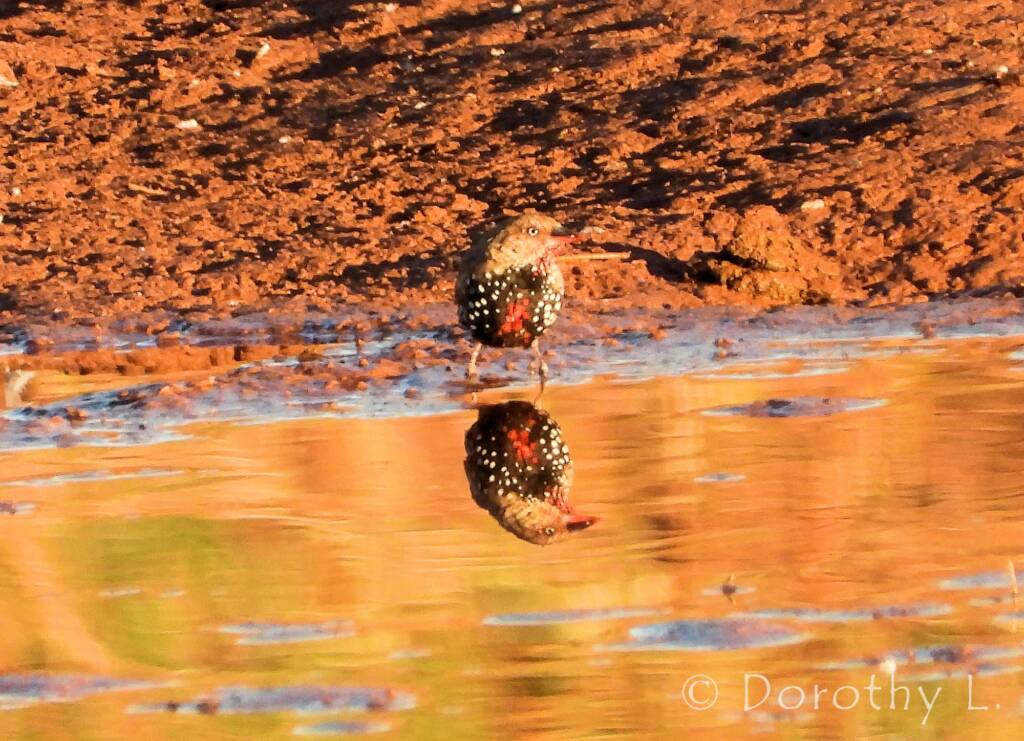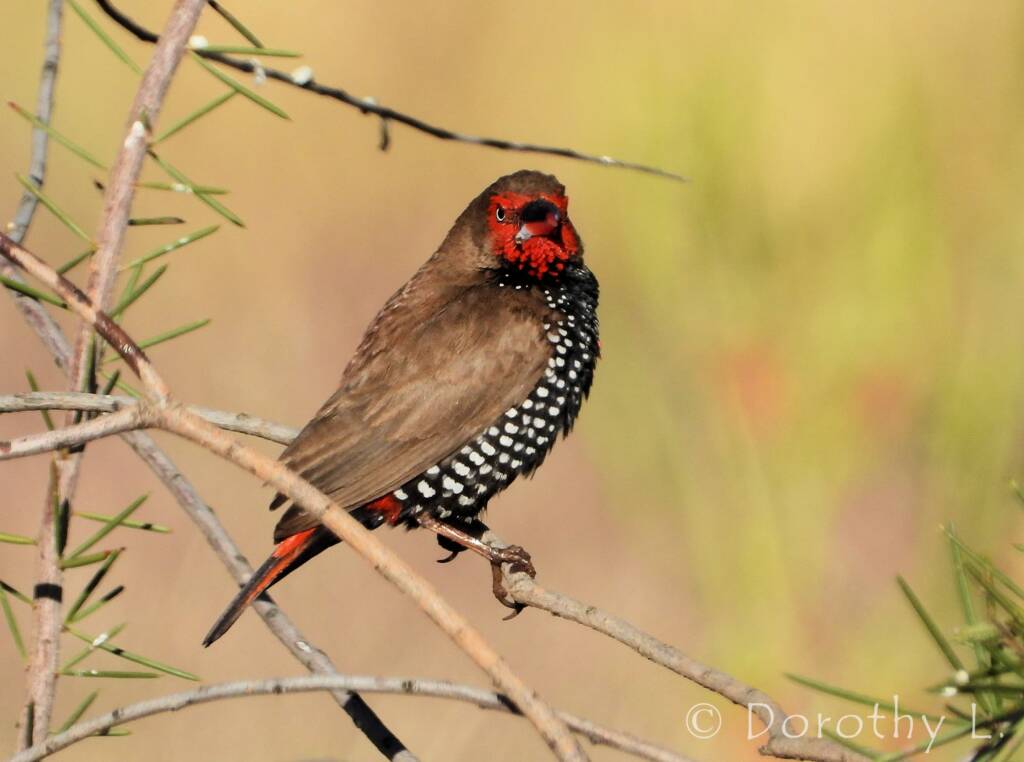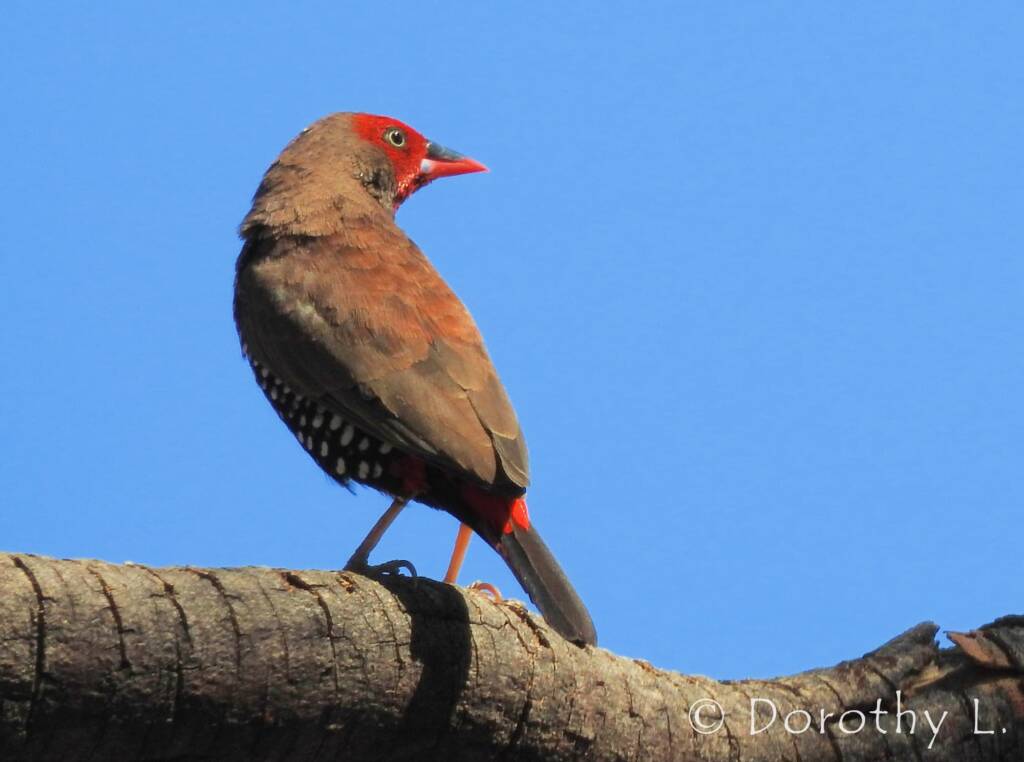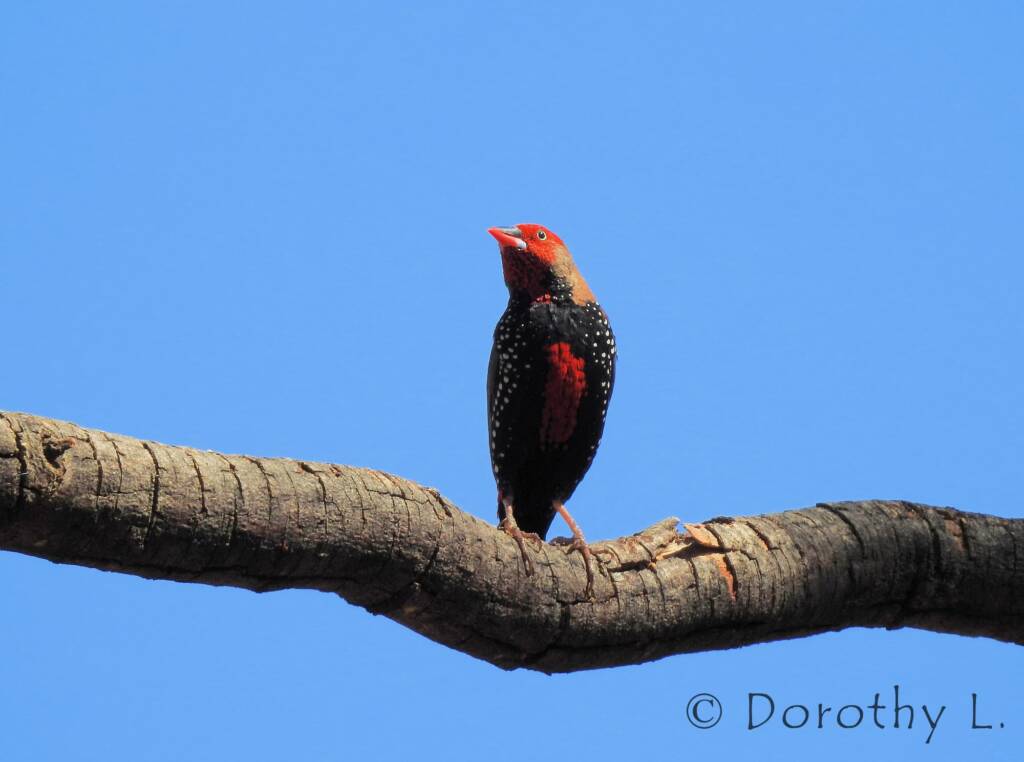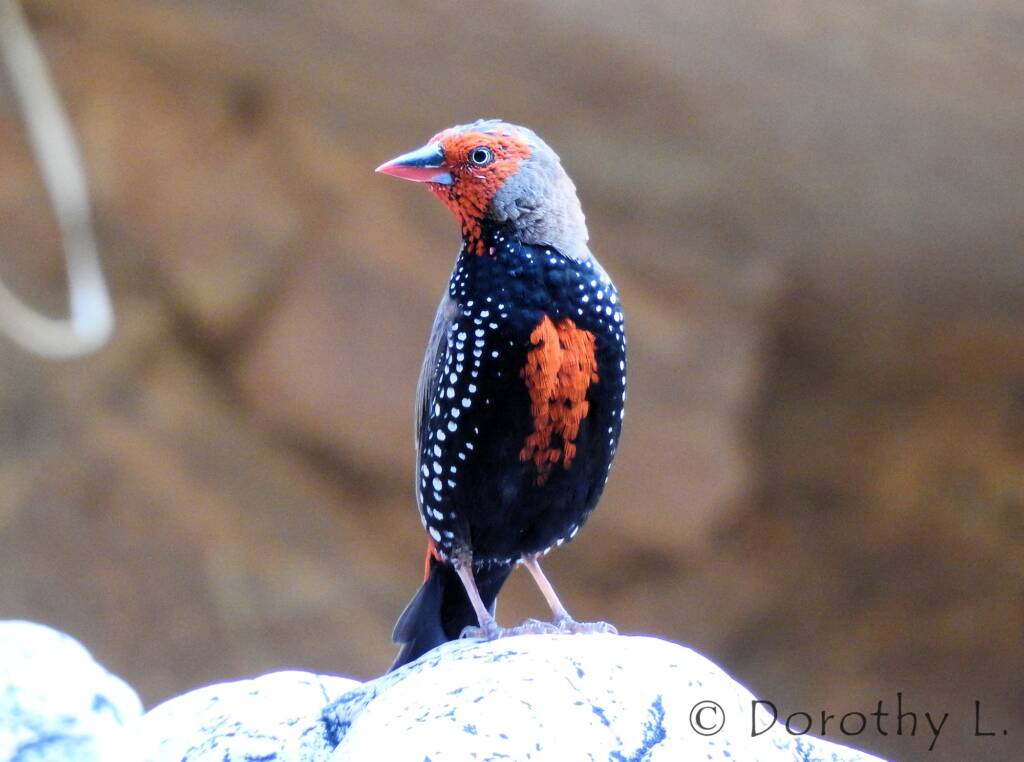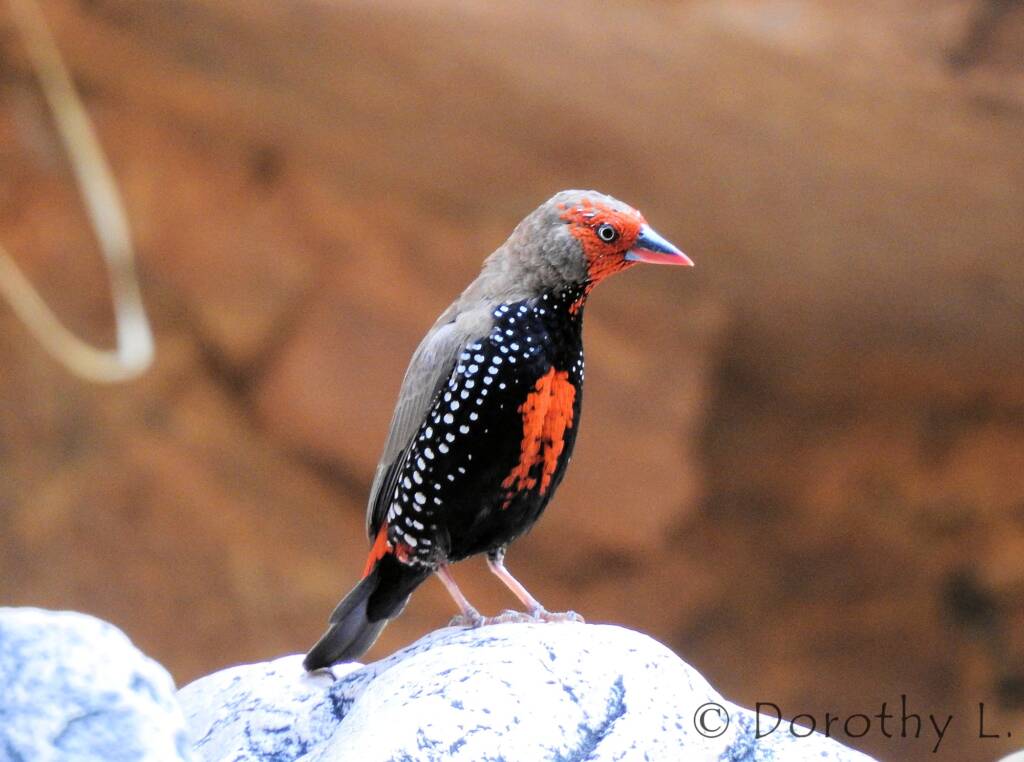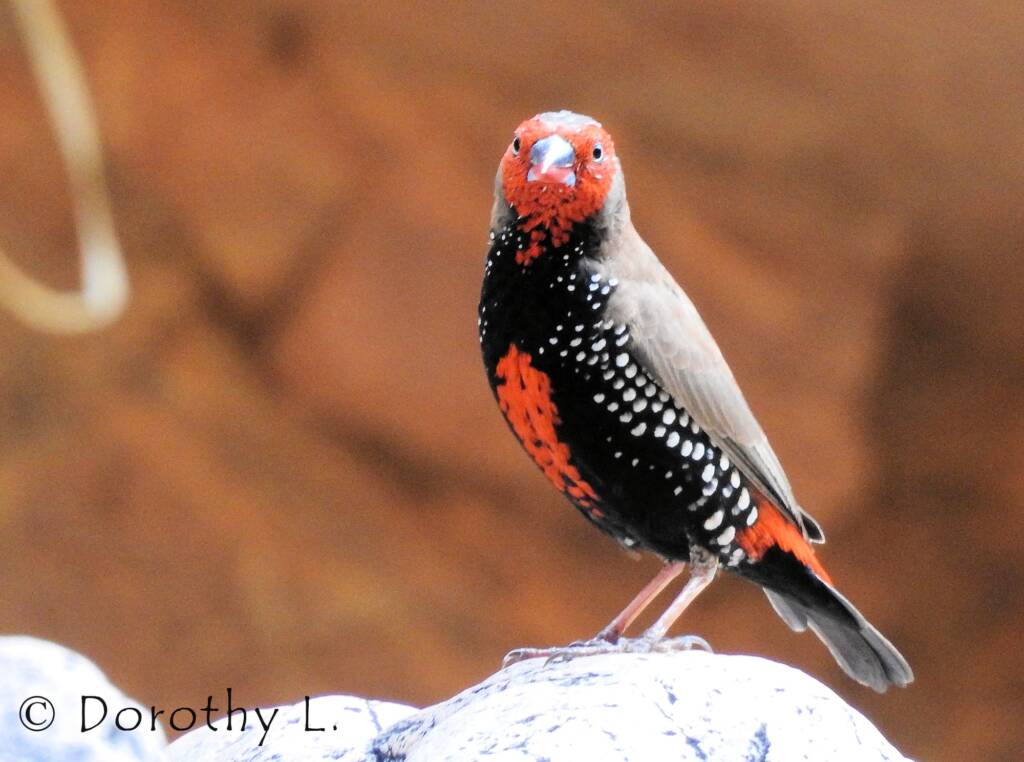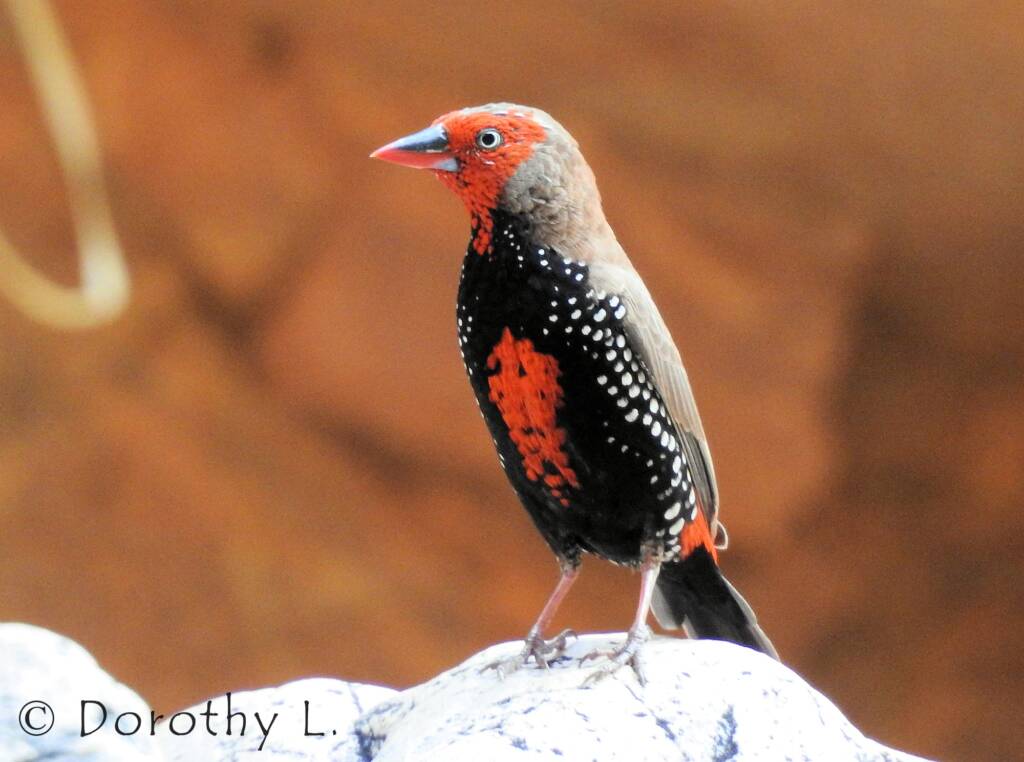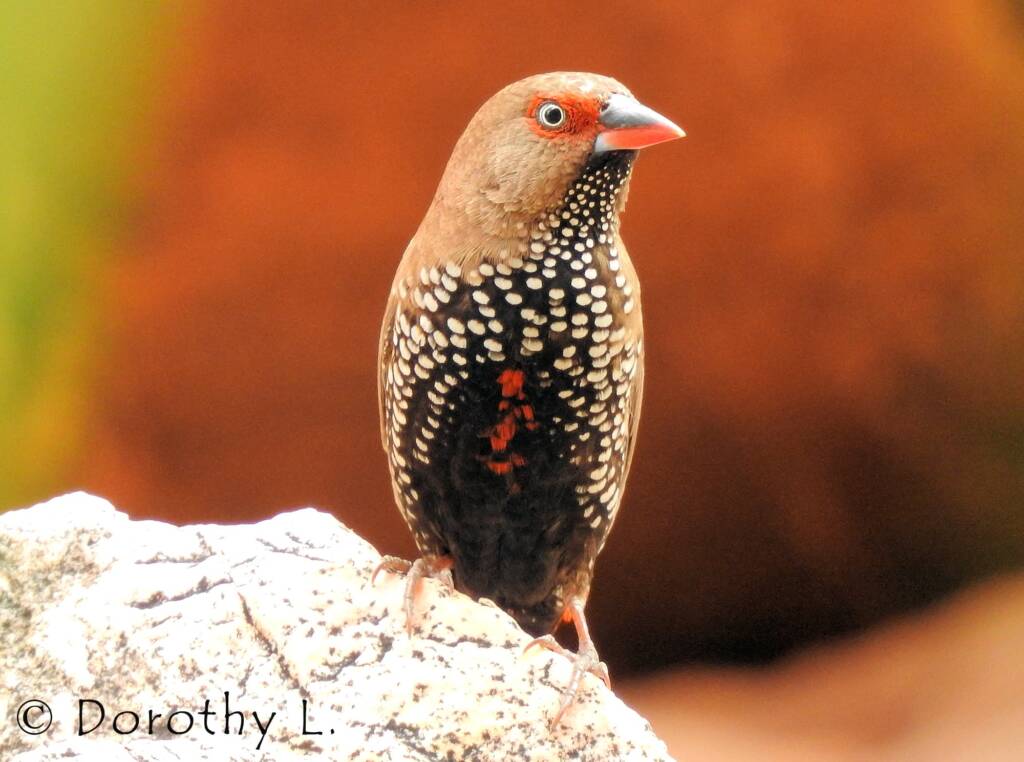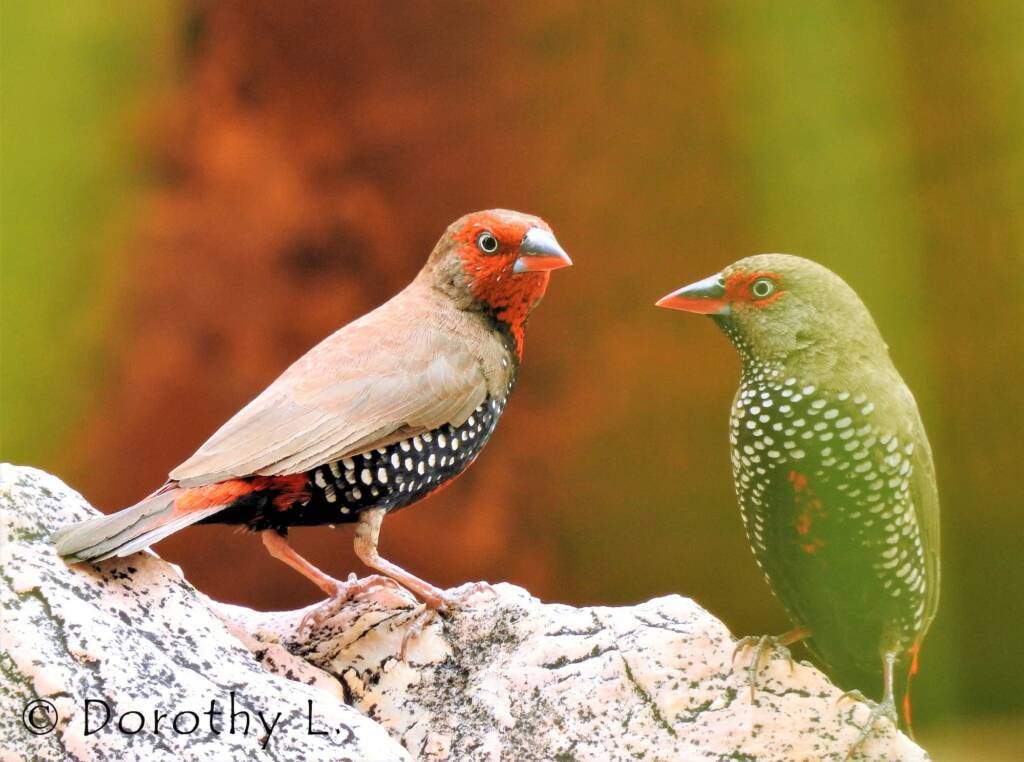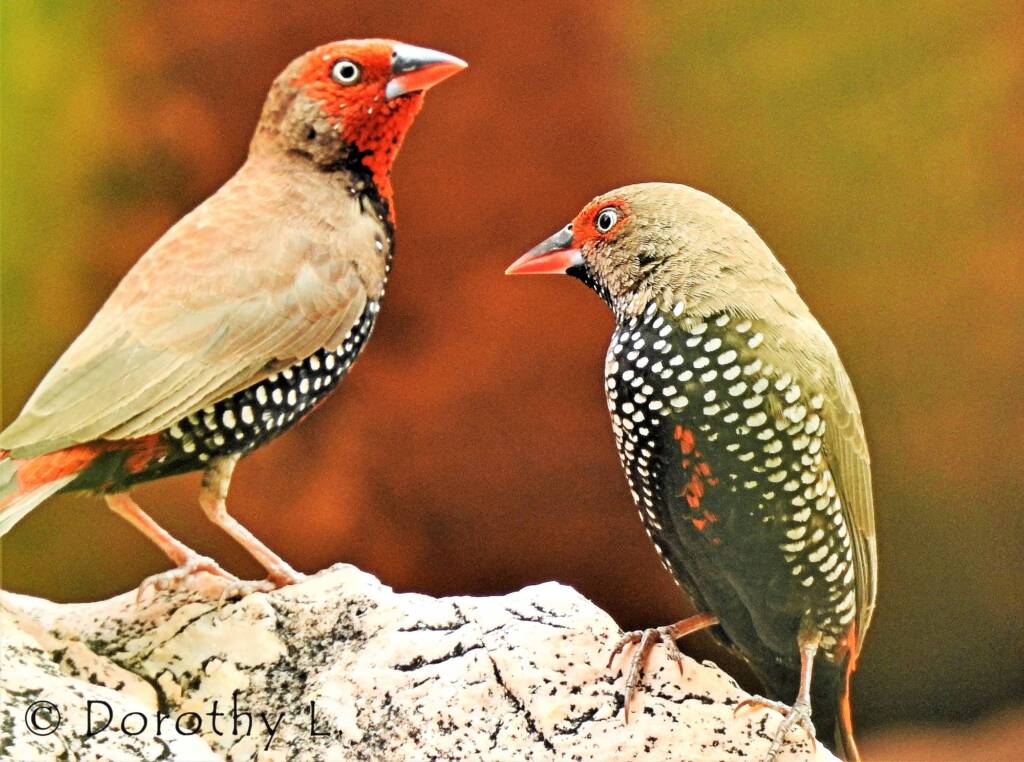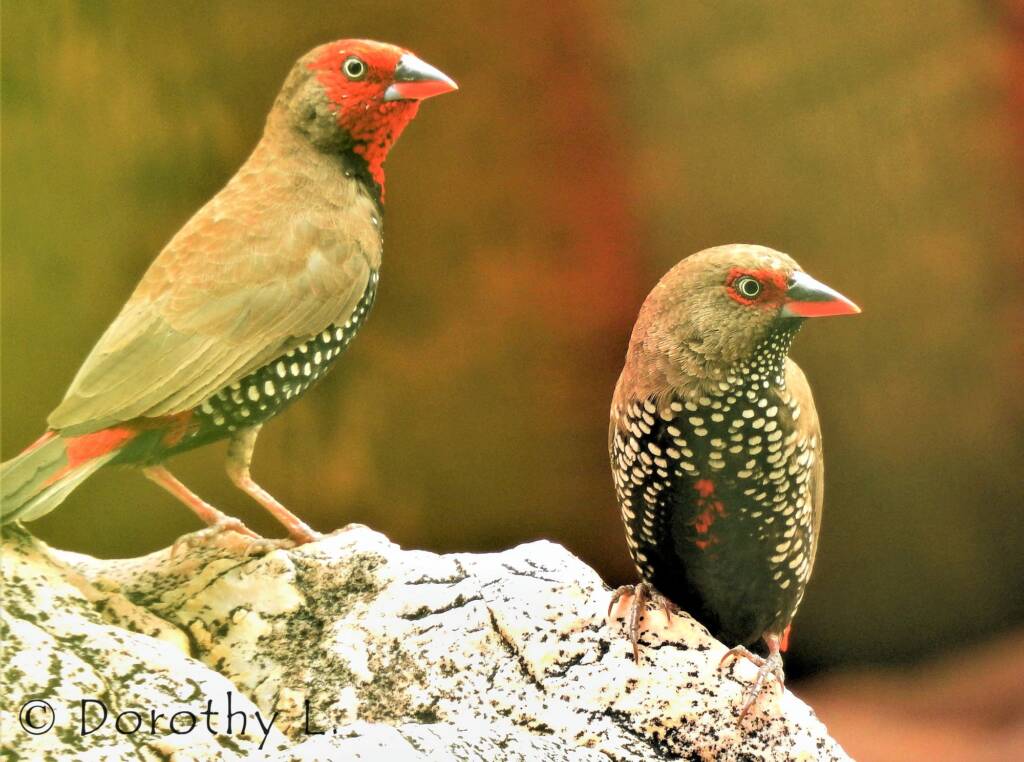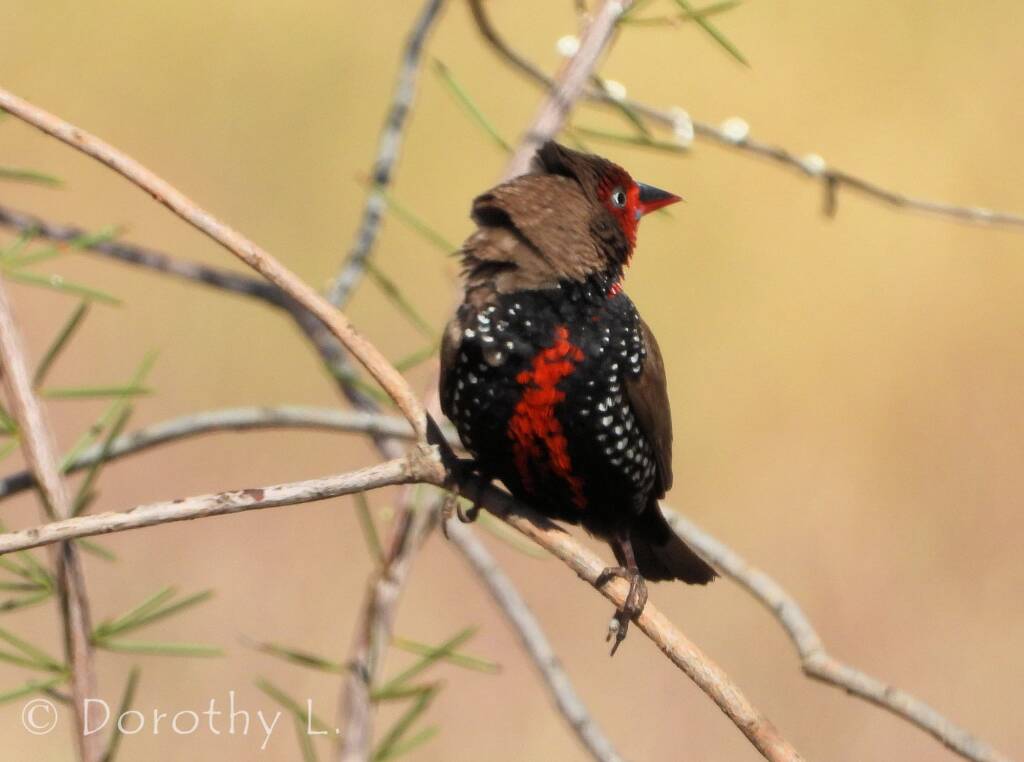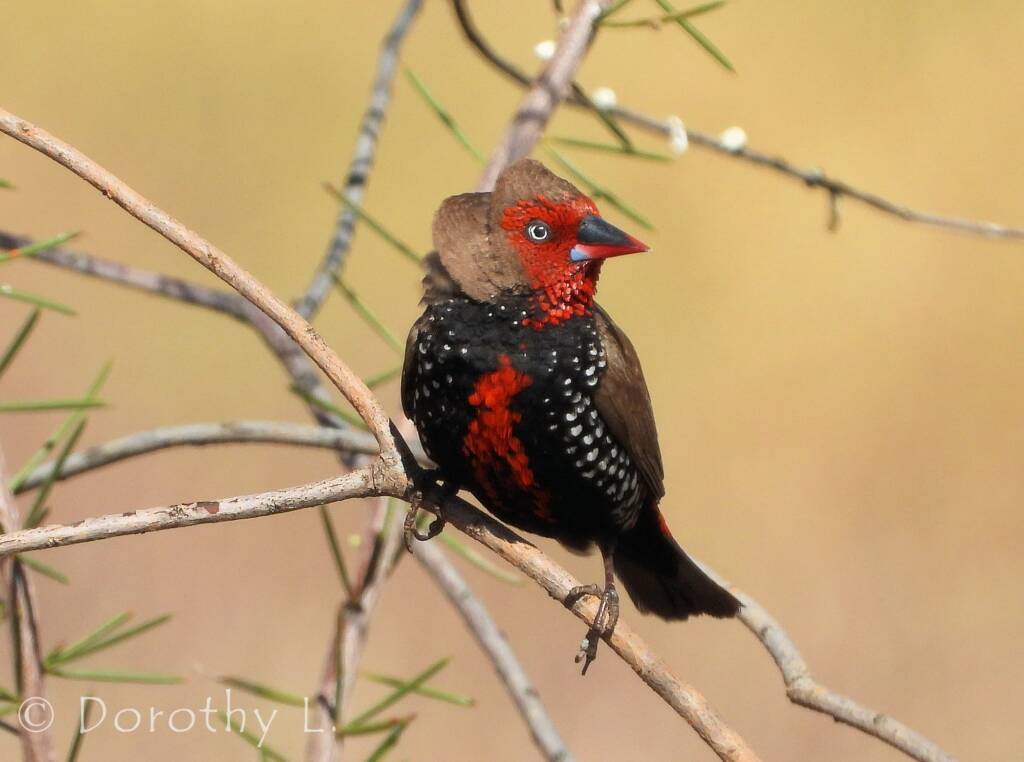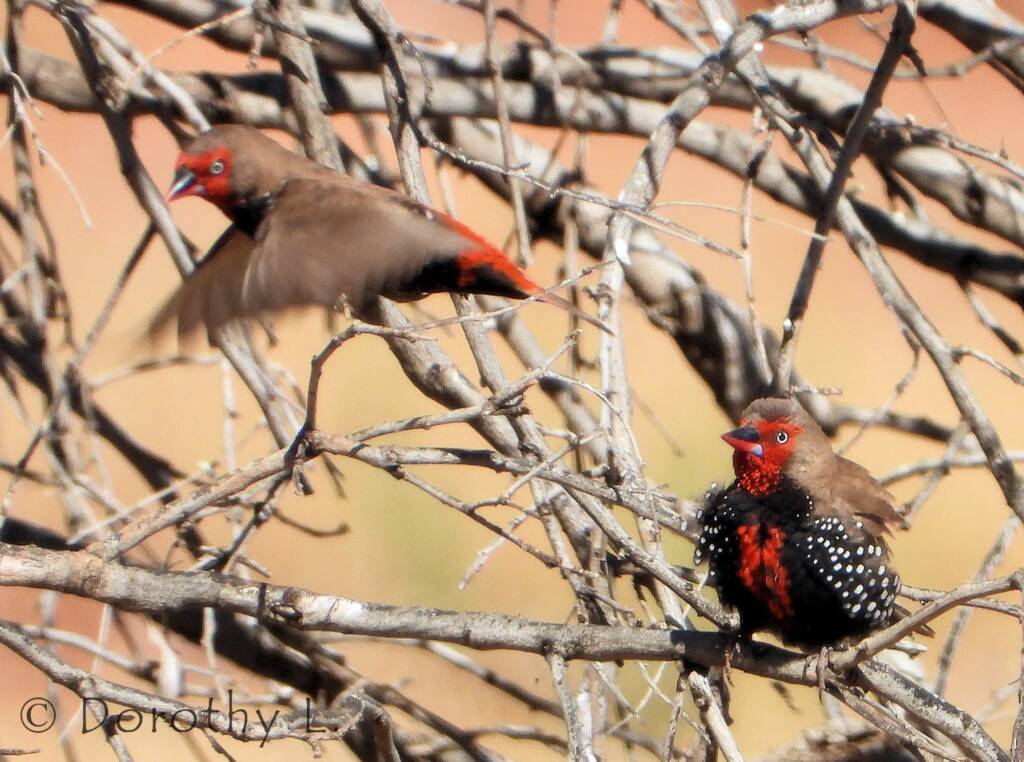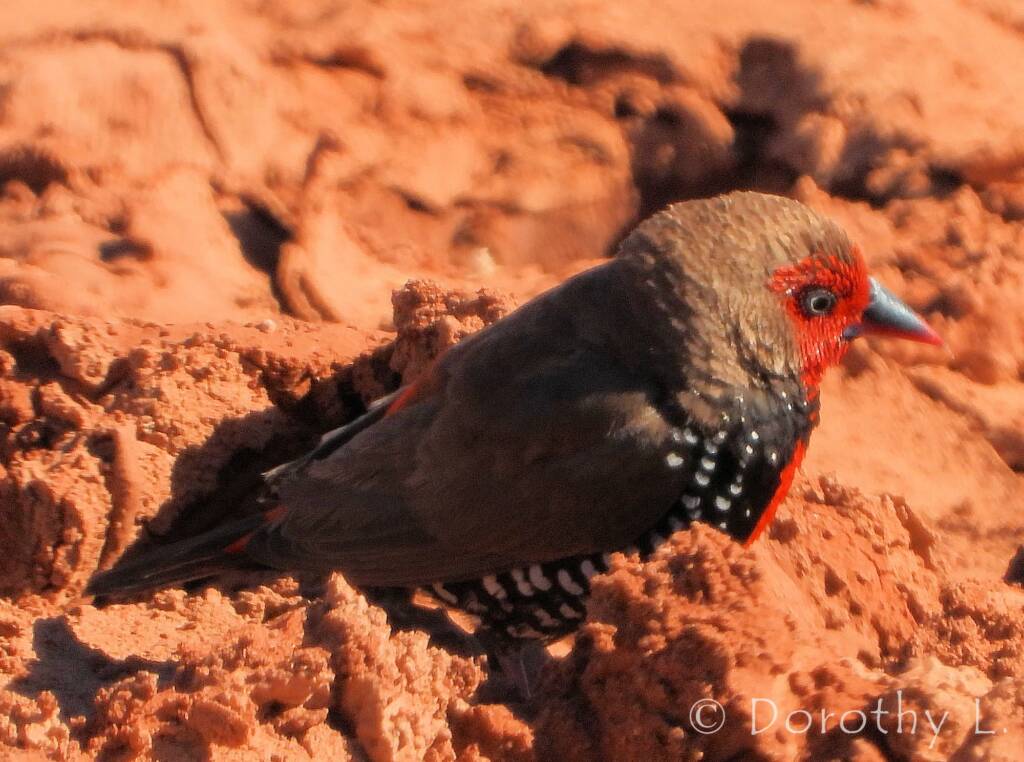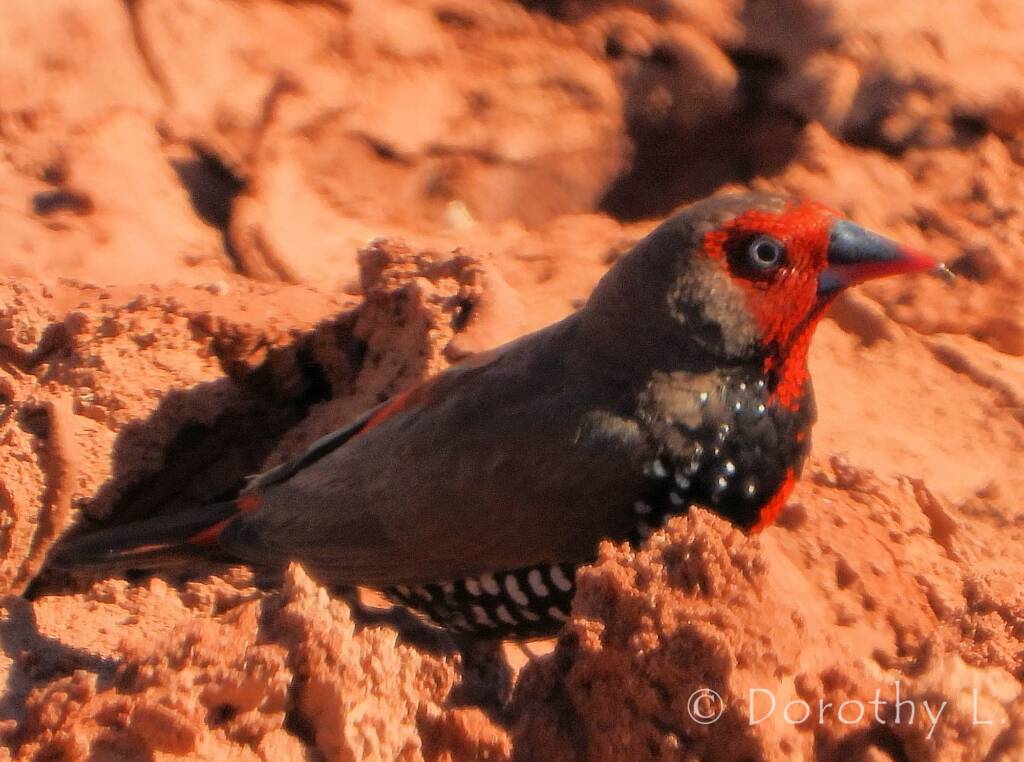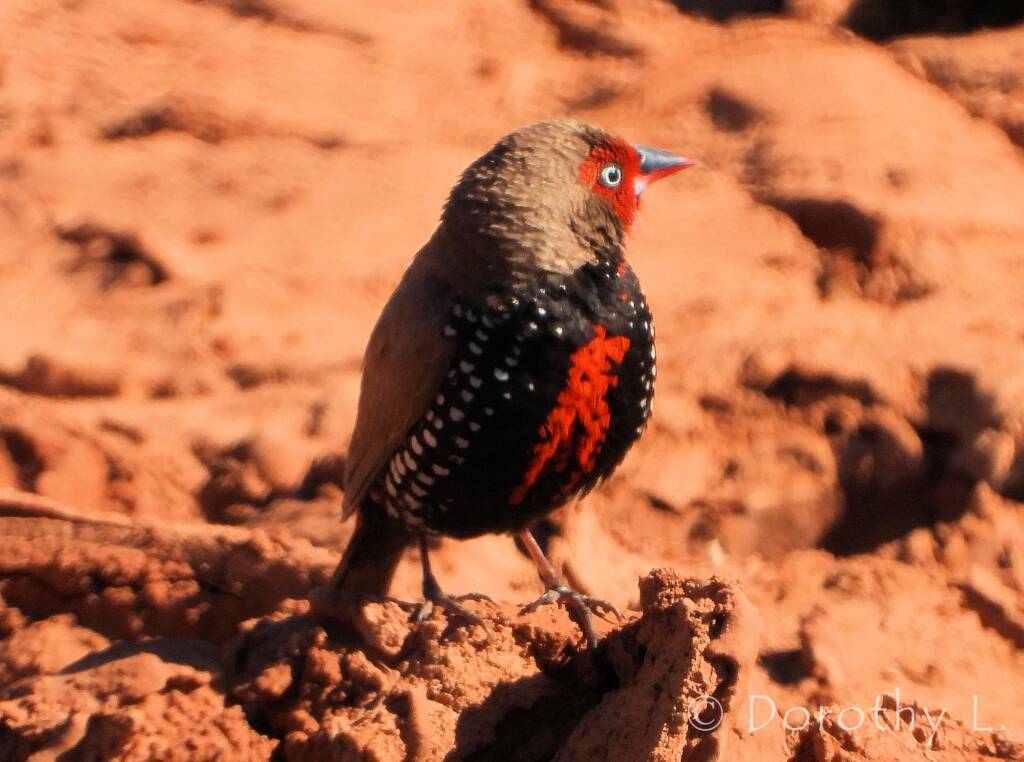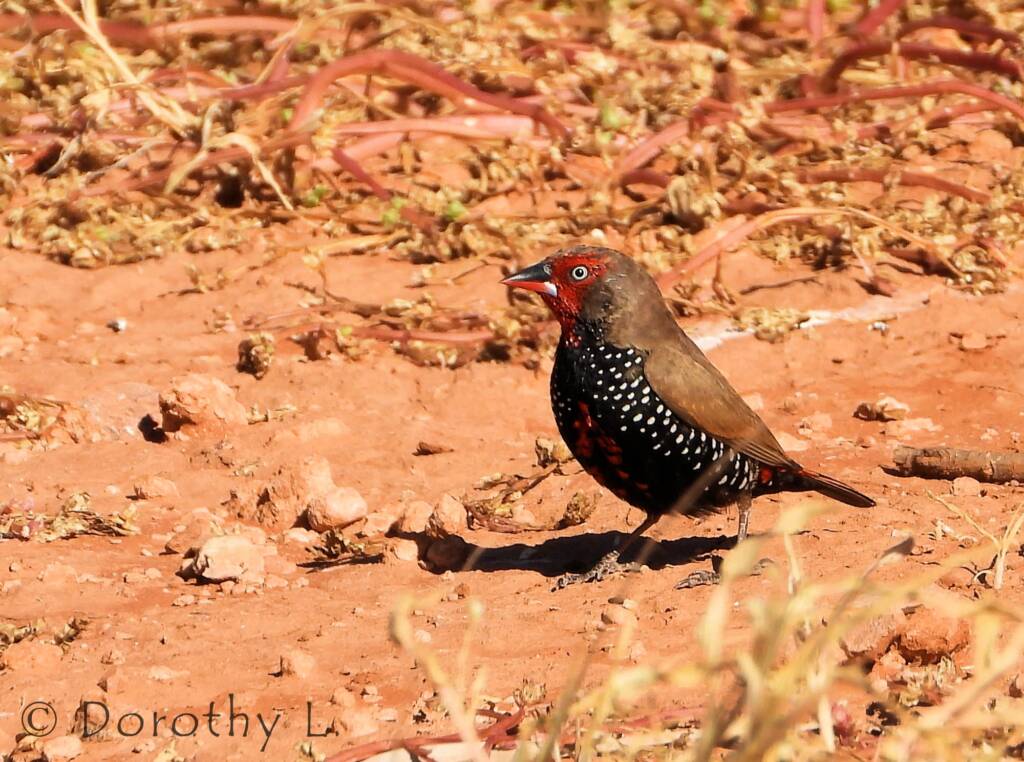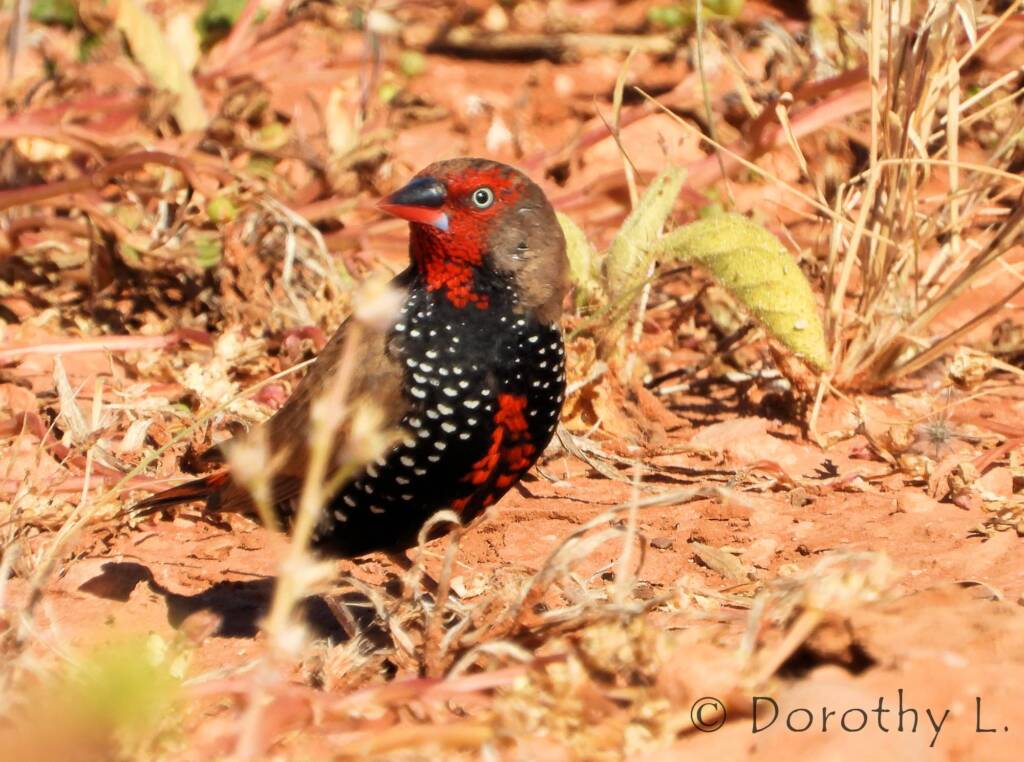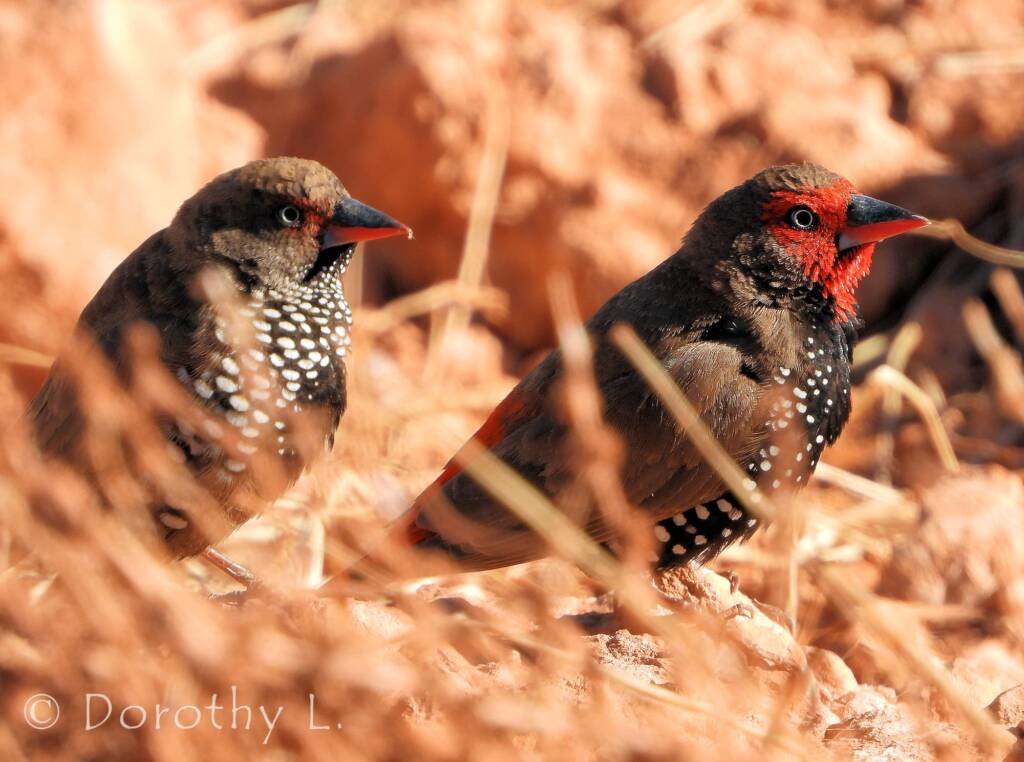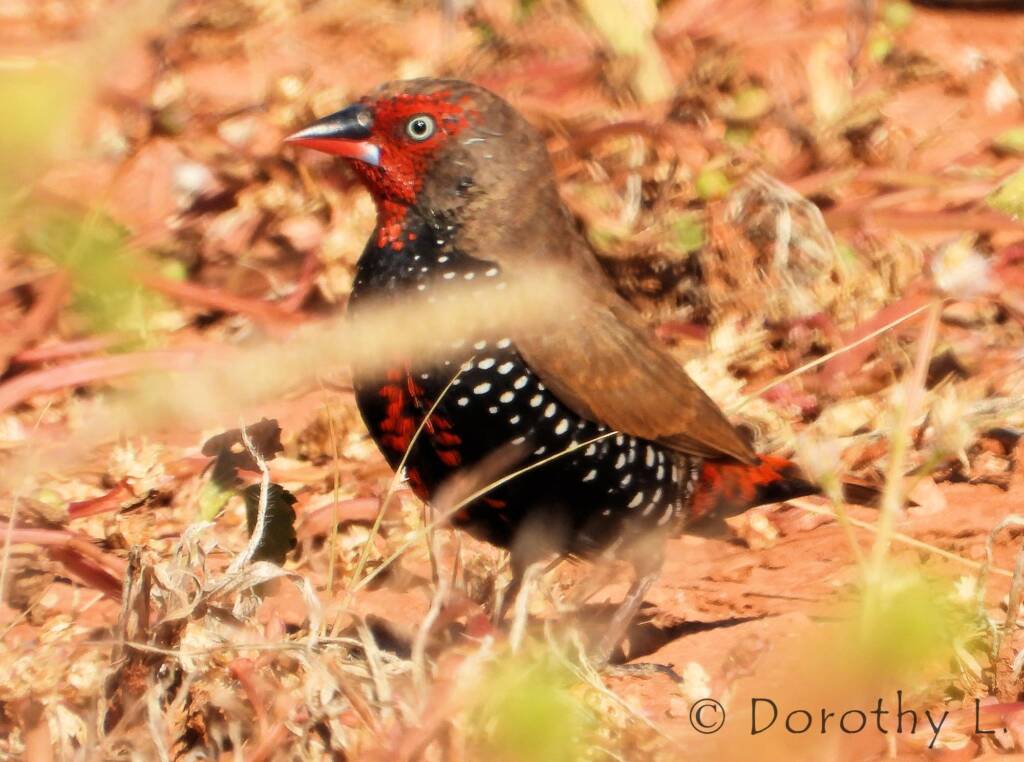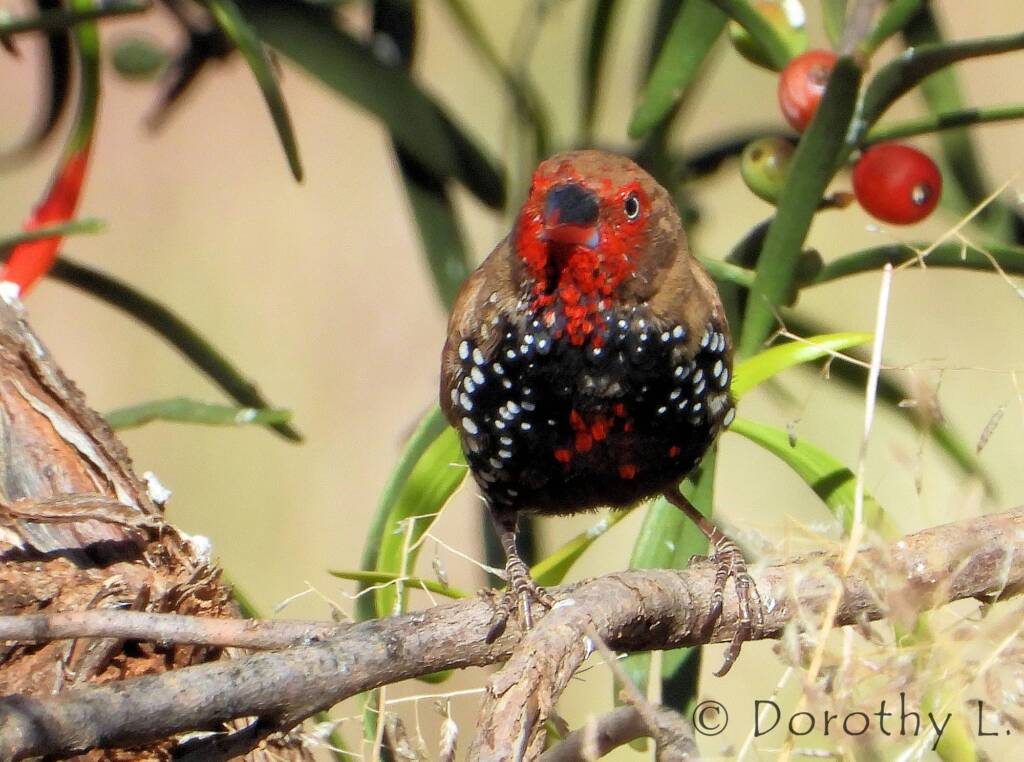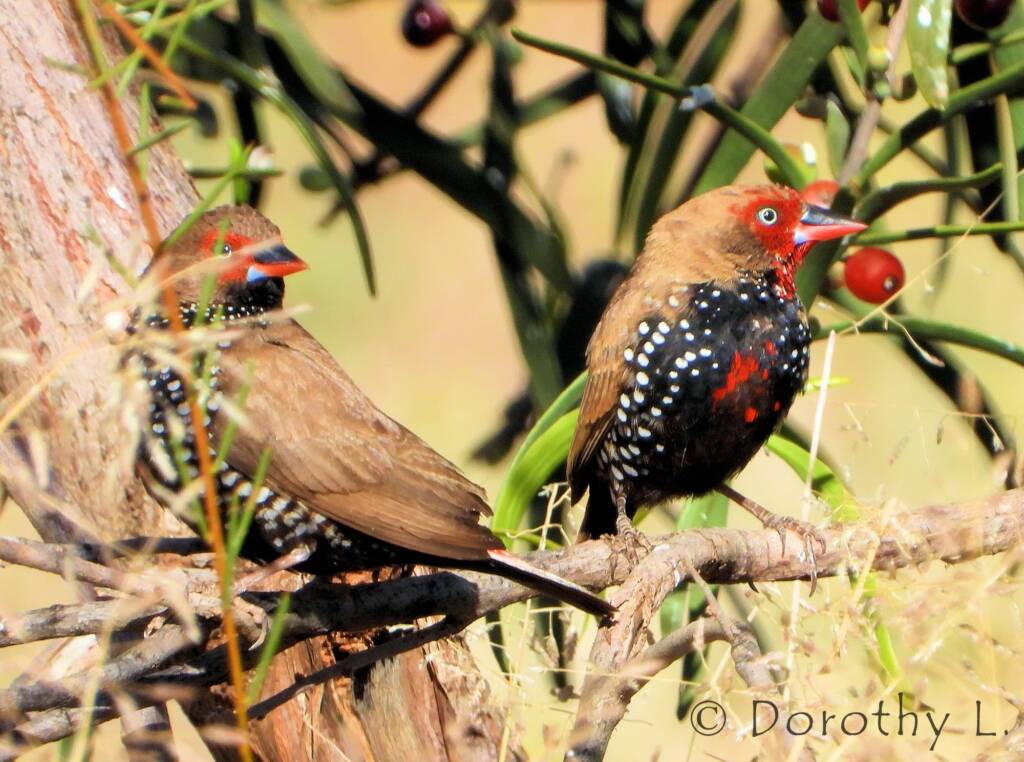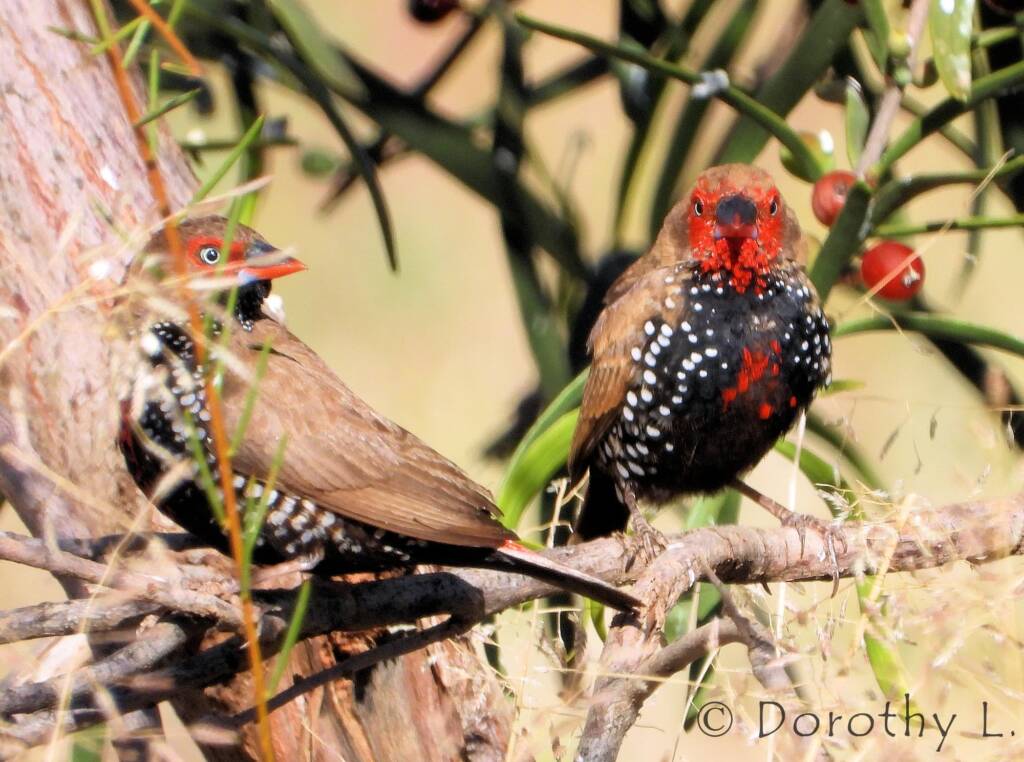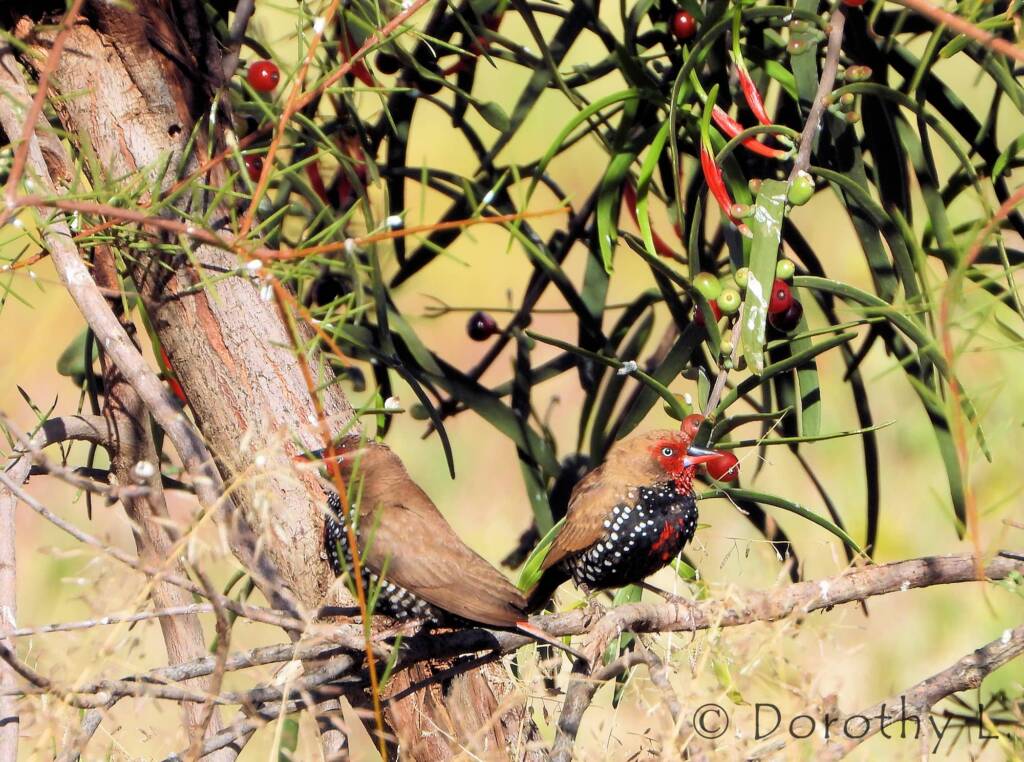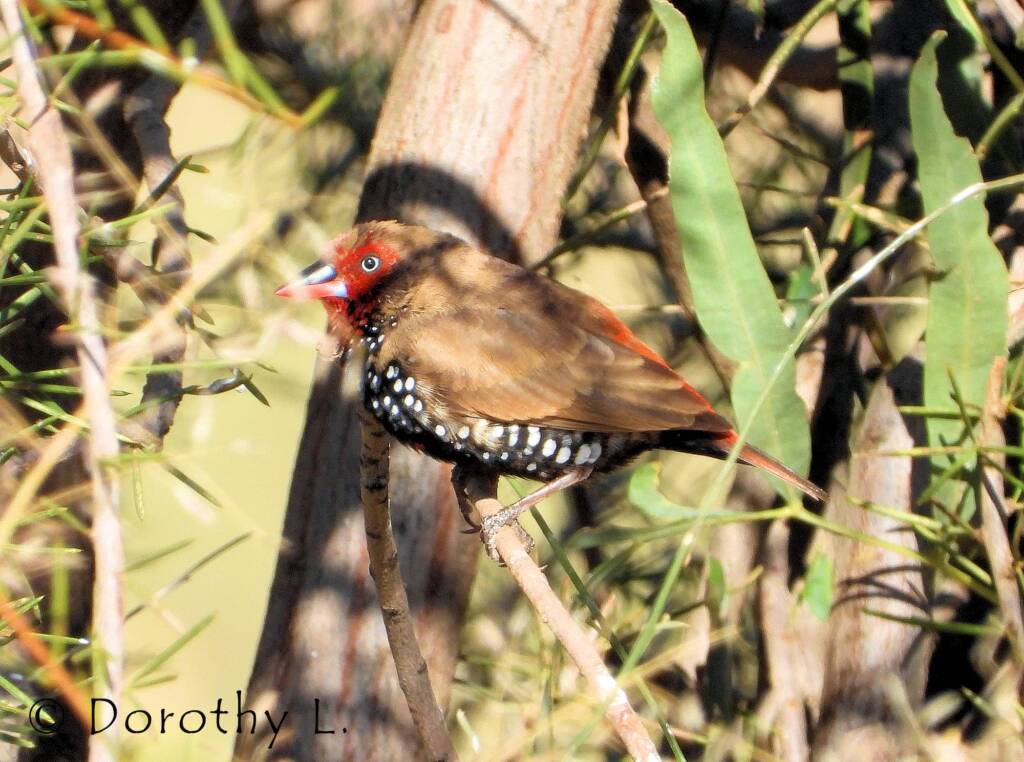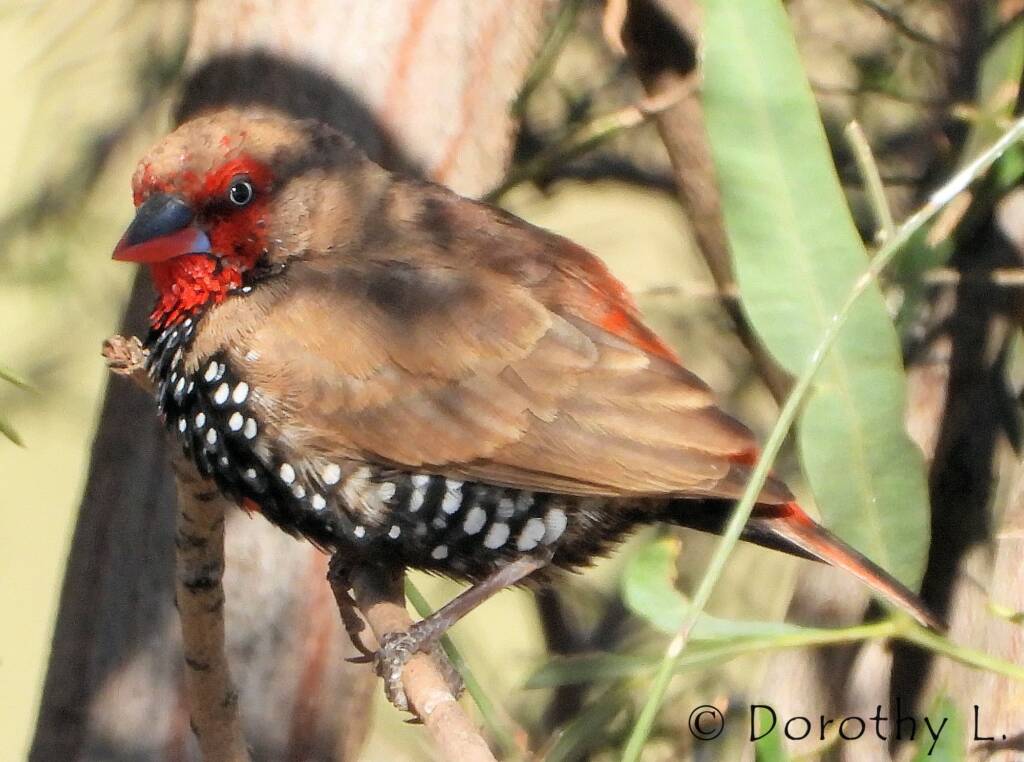Painted FinchPainted Finch – mixed company Painted Finch – strike a pose Painted Finch – water
The Painted Finch (Emblema pictum) is a small bird found in the arid inland region of Australia, especially in rocky gorges and hills with nearby water.
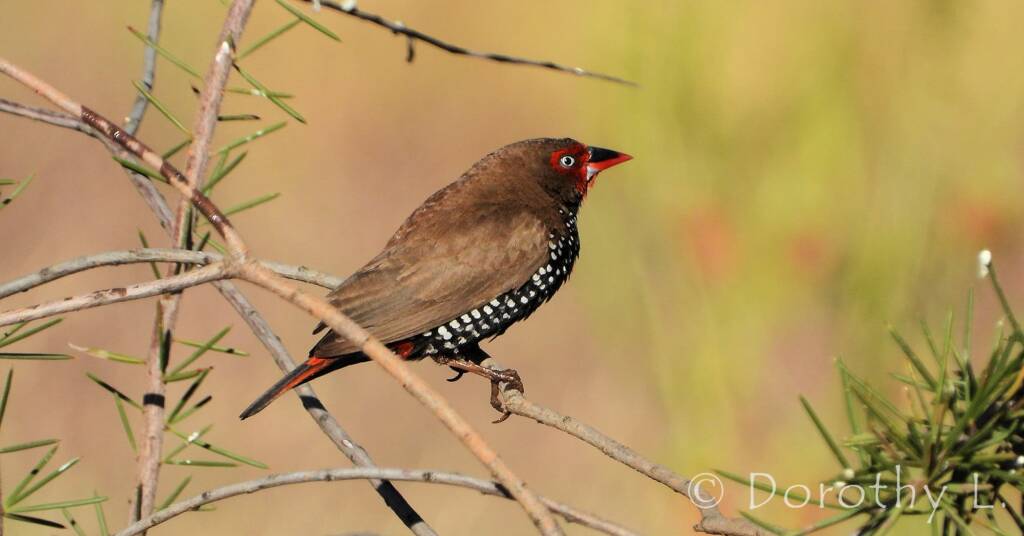
They have an olive brown feathers above, red, black with white spotted flanks below in both of the sexes. The male has a bright red face, whilst the female is red around eye. They have a red rump that is seen in flight. The underparts are generally a duller brownish-black in the females, although the females tend to be more spotted.
The male of the species are bright red in the face, throat, the centre of the belly and the rump. There is of course variation between the male individuals, with the intensity of the red and the area that the red covers, with some males having the red on the throat extending down to and joining the red area on the belly. The chest and under parts of the male bird are black with white spots that extends down the flanks, whilst the crown, nape, back, tail and wings are an olive-brown. The upper beak is black with red at the tip. The part of the beak is red, becoming pearl white at the base. The feet are flesh coloured.
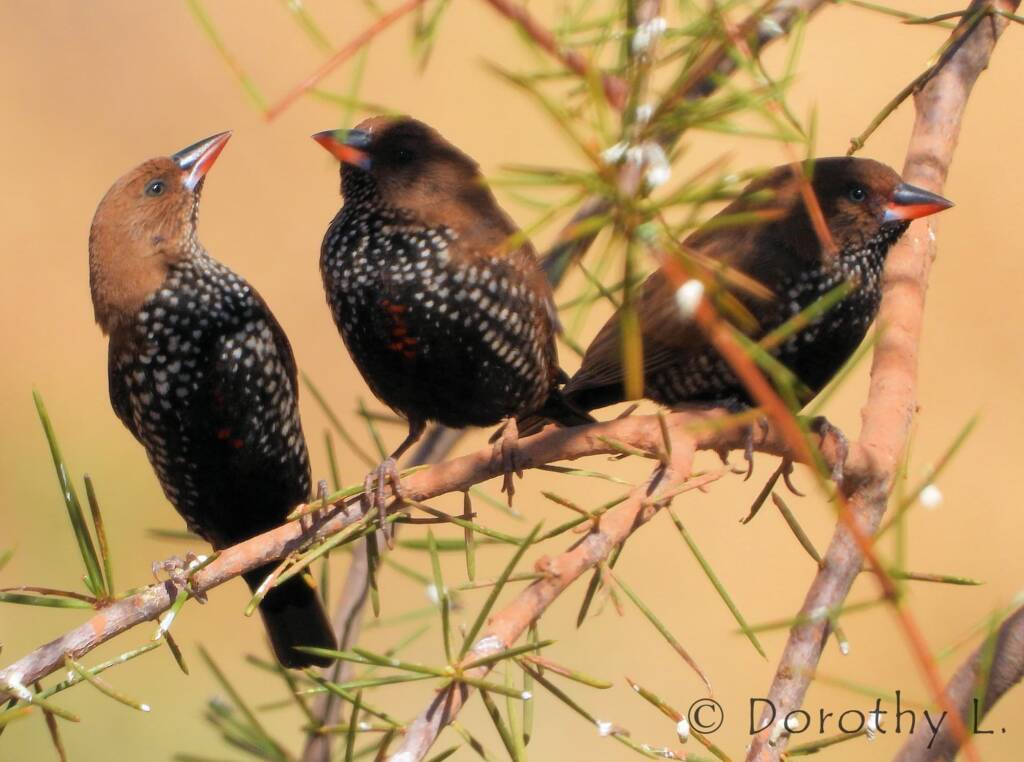
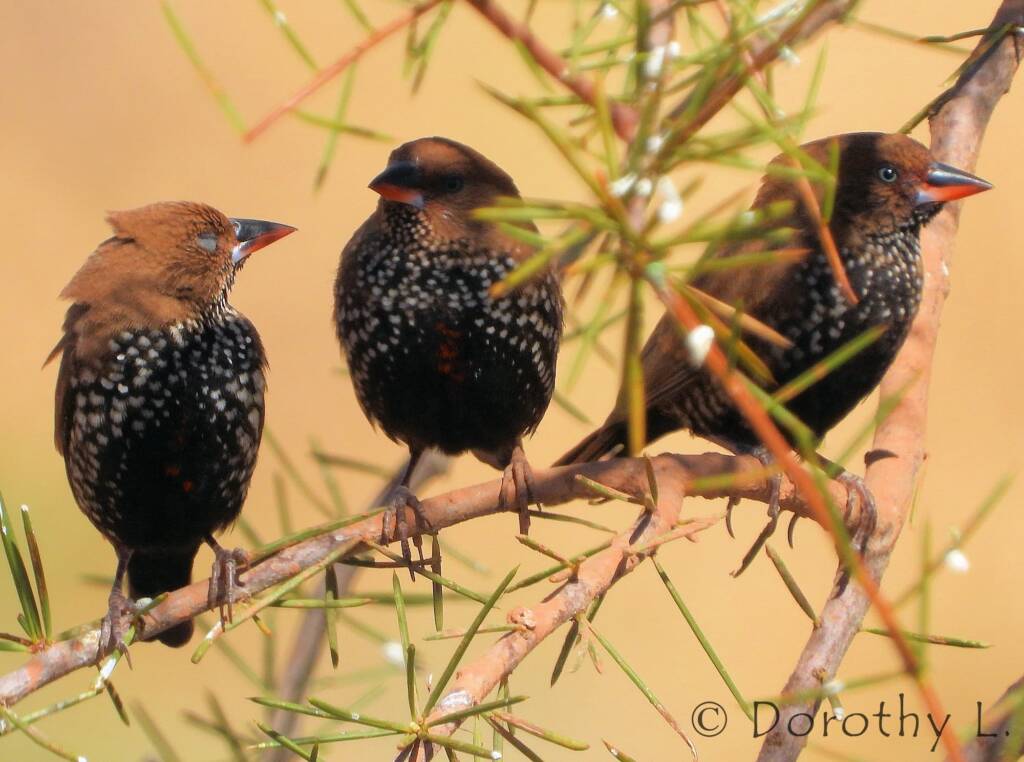

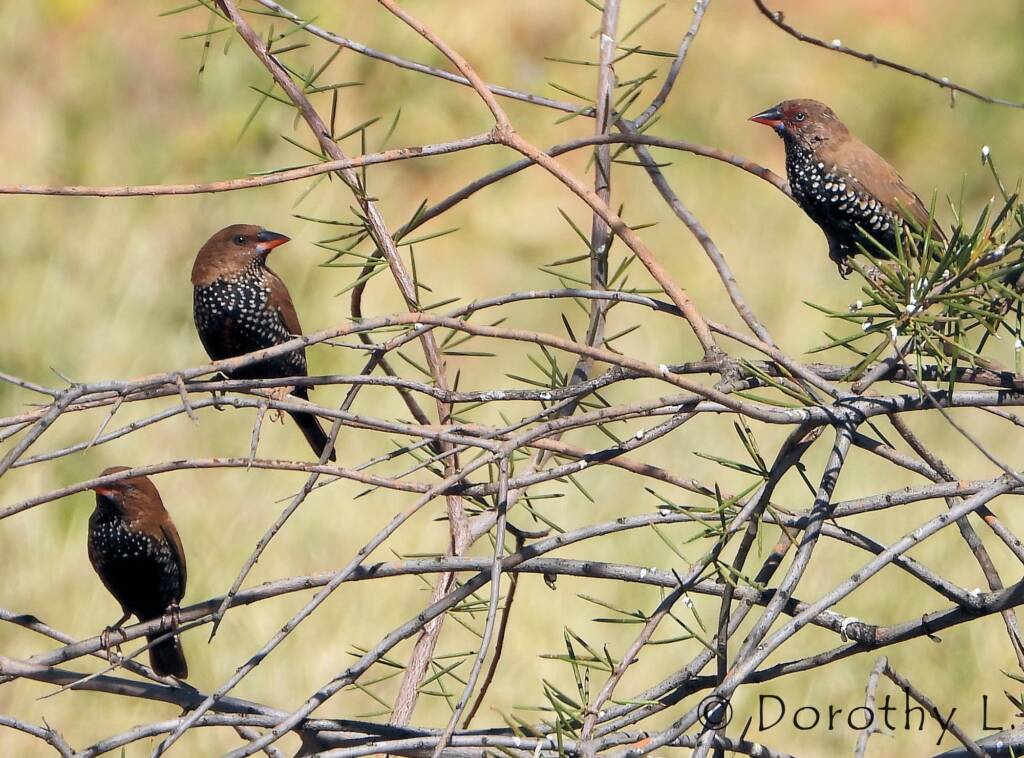
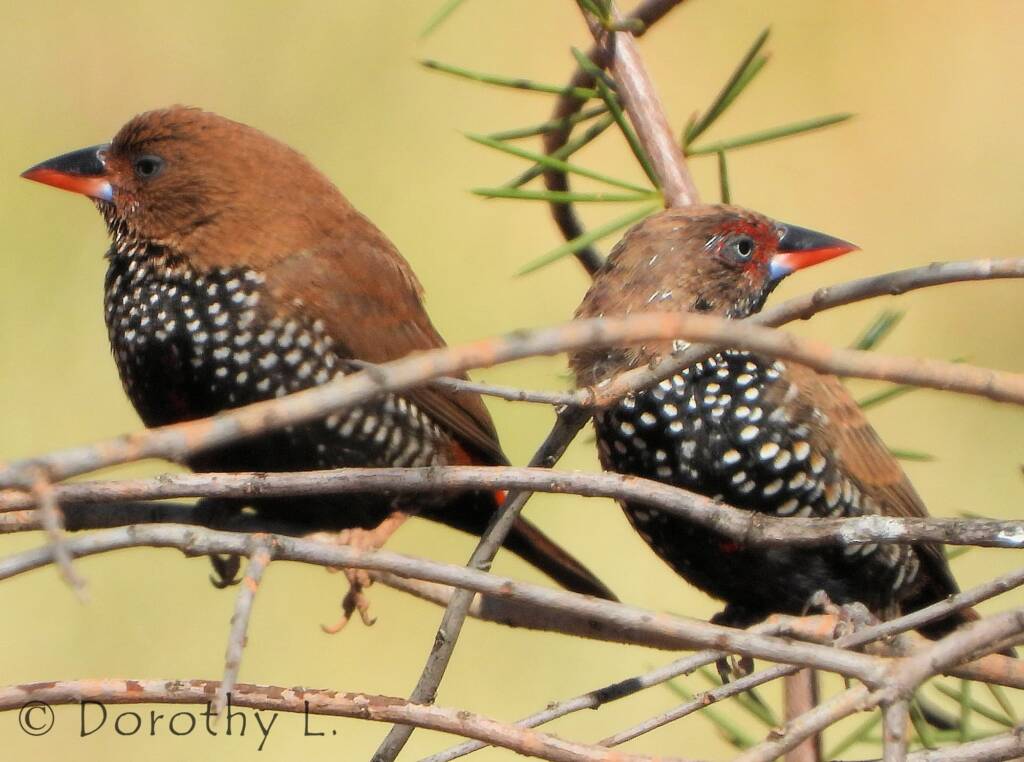
Whilst the female is similar to the male, the belly is different in that it only has a small area of red feathers, whilst the chest and throat areas are more spotted with white. The female are red around the eyes. There is also variation in the female bird in that they vary with the amount of red on the face, with some only having a line of red above the eyes, whilst others are red around each eye. The underparts are generally a duller brownish-black in the females. Both sexes have a red rump that is seen in flight.
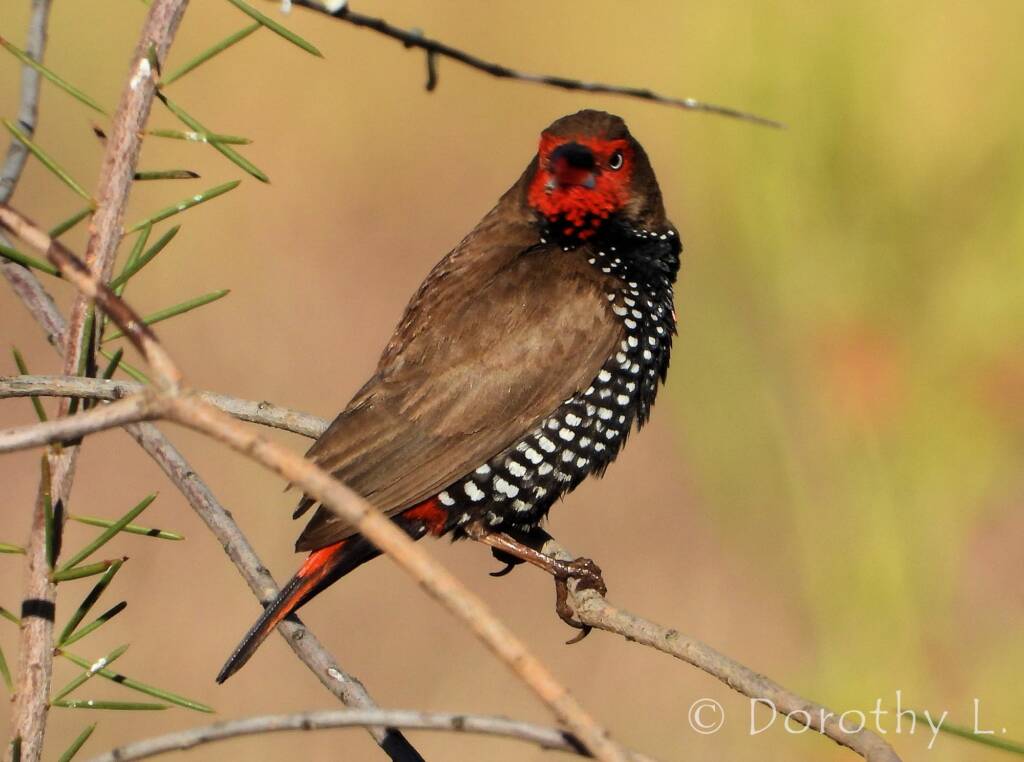
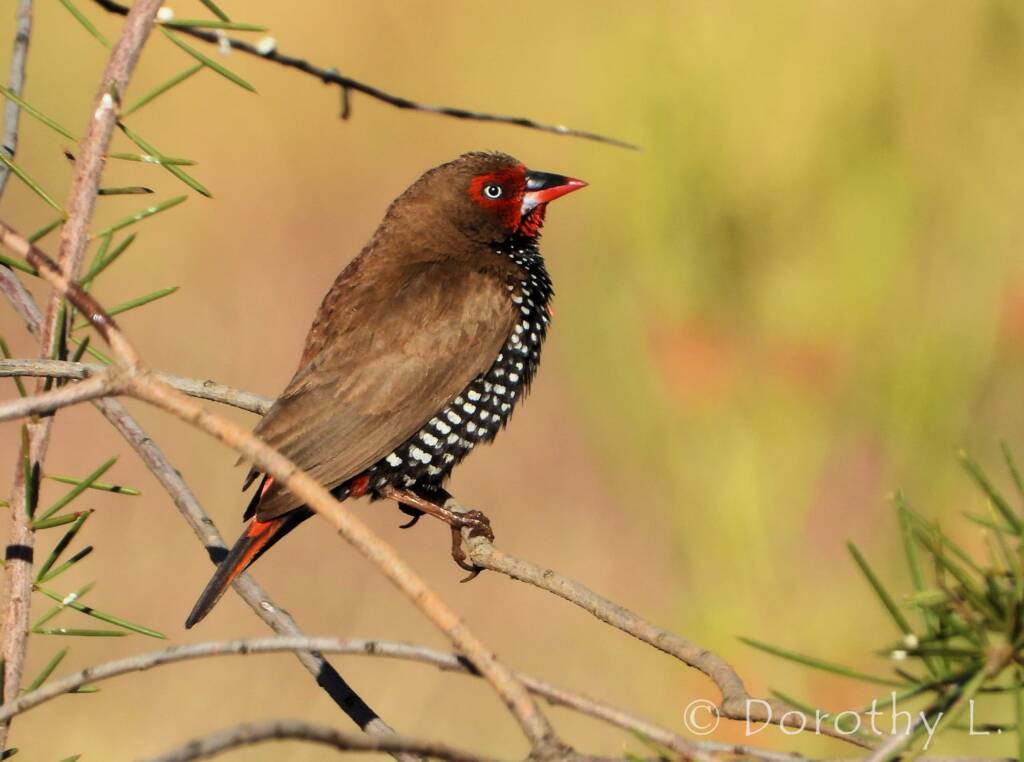
The juvenile birds are duller versions of the female, with a great deal of variation between individuals. Some juvenile birds fledge with more white spots on the chest and belly, whilst others young birds have a darker chest and belly area that are almost devoid of spots. Some young birds will have red feathers on the belly and others may have none. They have a dull coloured red rump and dull coloured brown head, back and wings. All young birds are seen to have black beaks, becoming paler and almost pinkish on the lower part. The juvenile’s eyes are a grey-brown. They attain their adult plumage at about 12 weeks.
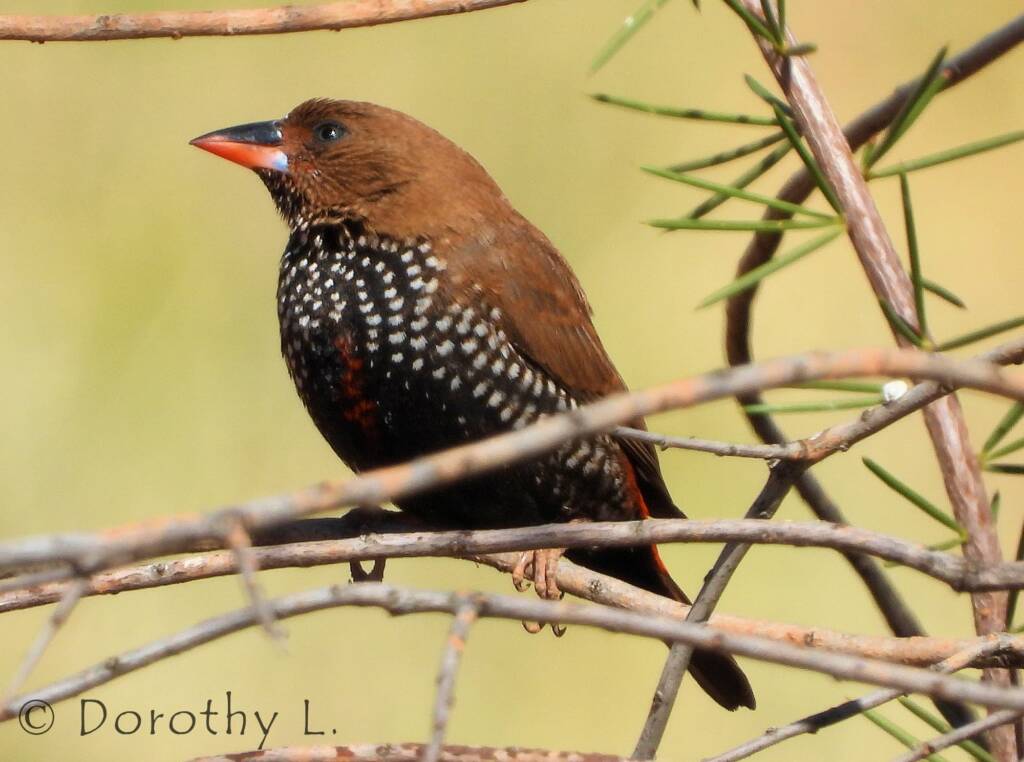
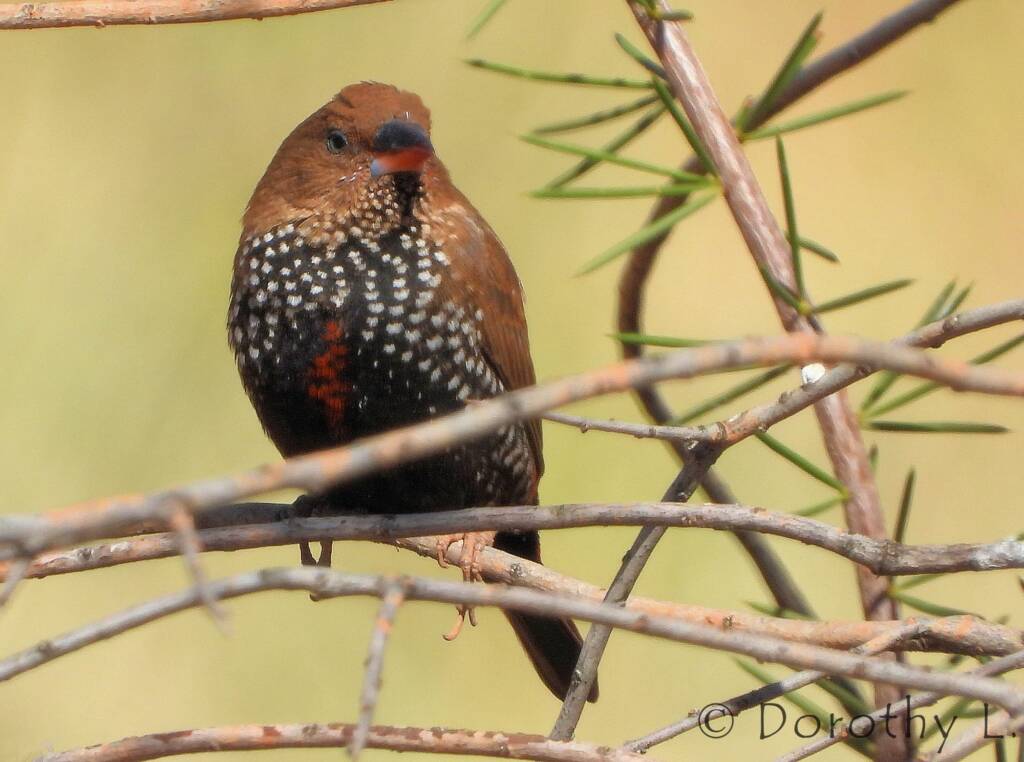
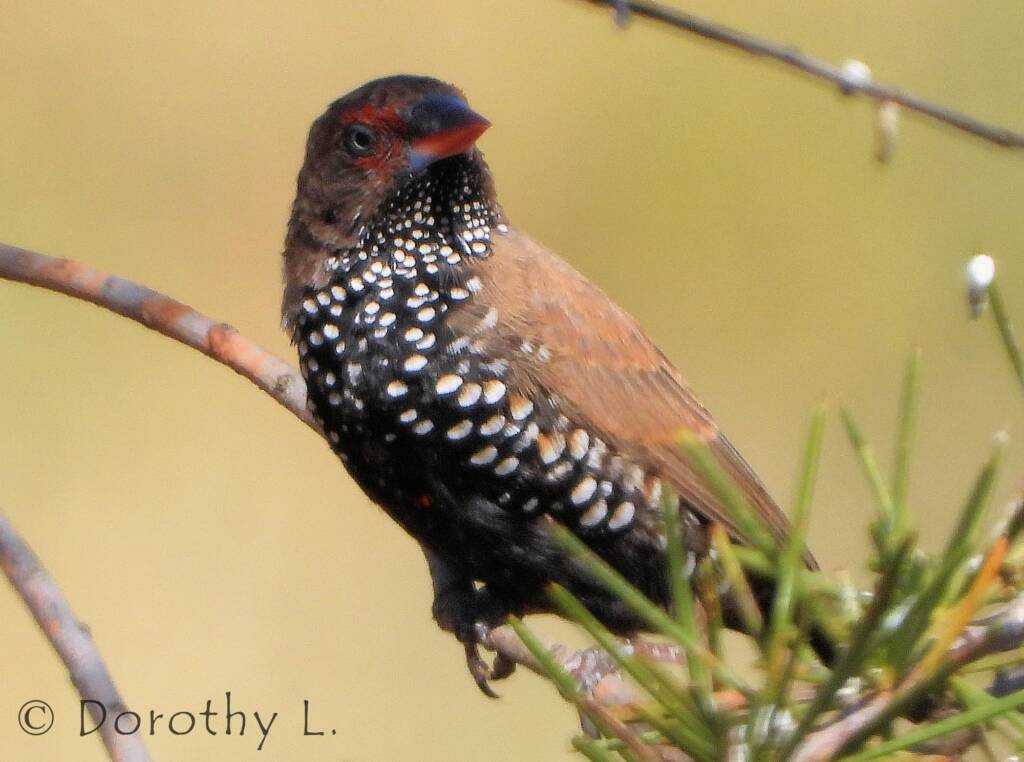
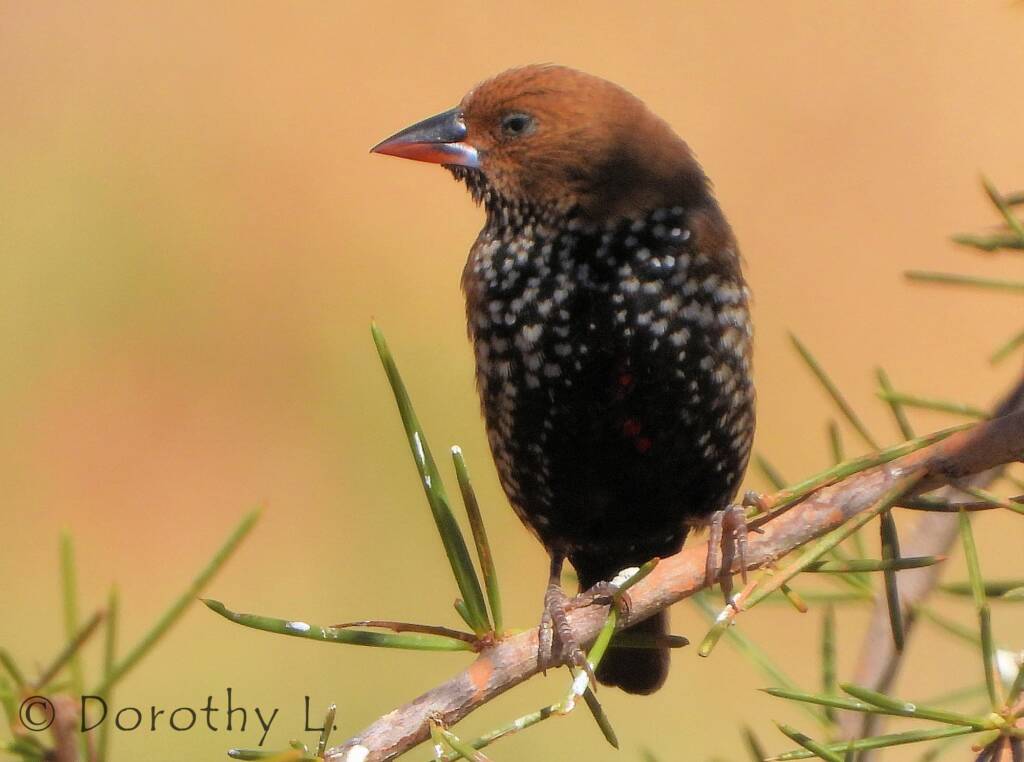
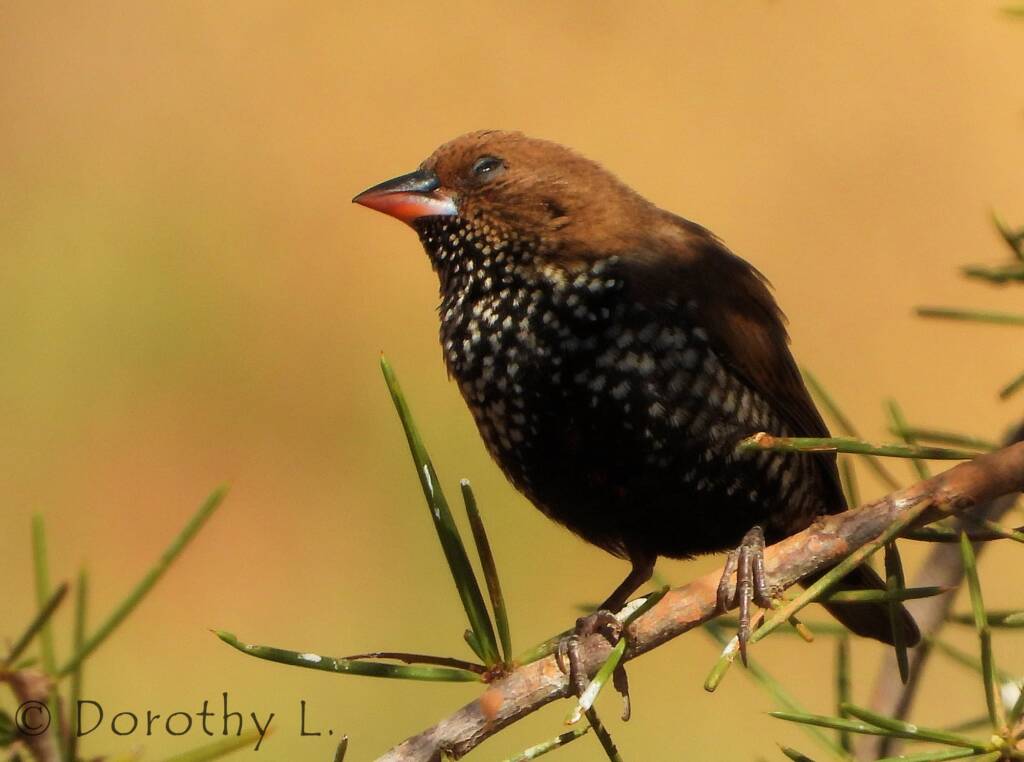
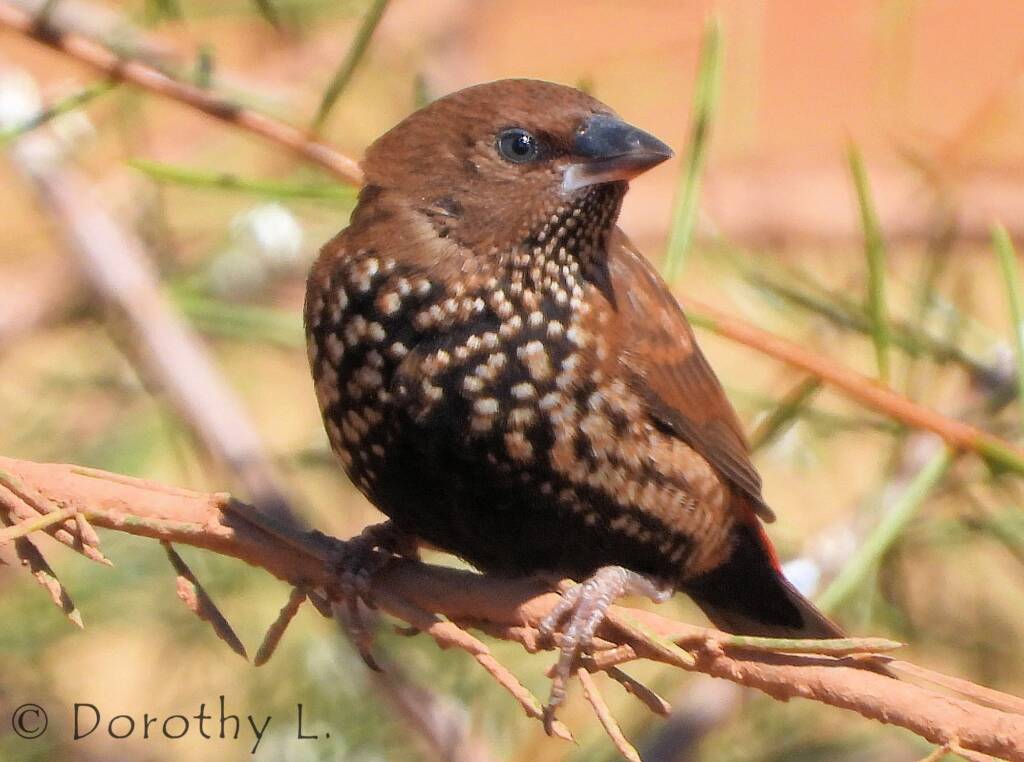
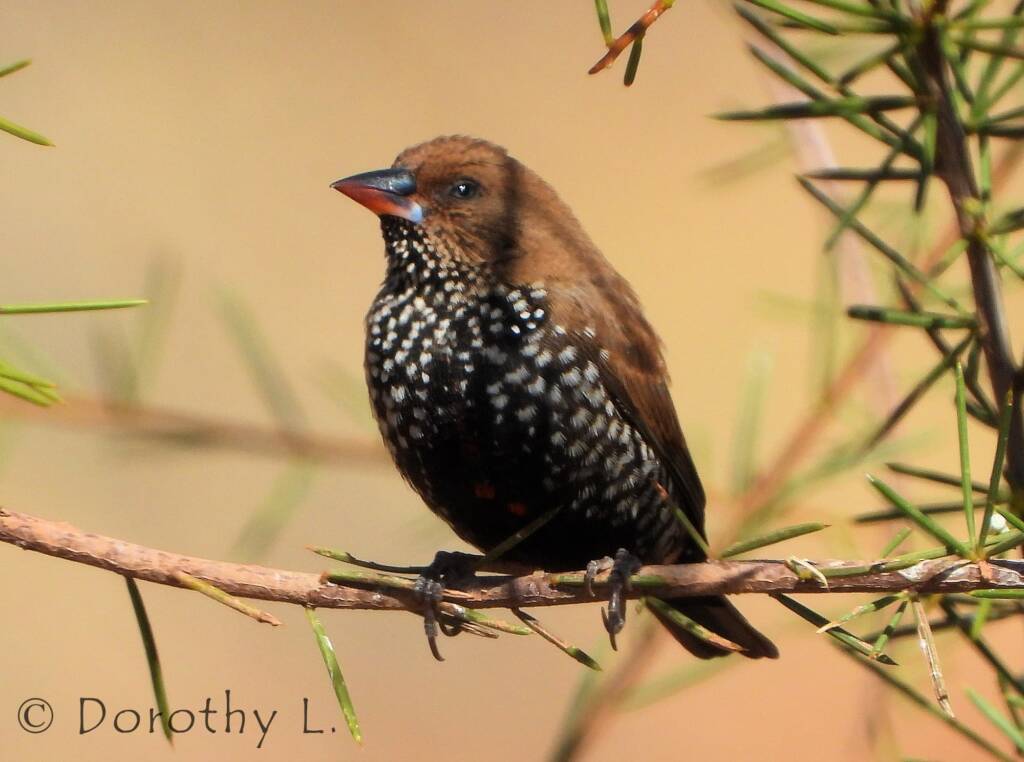
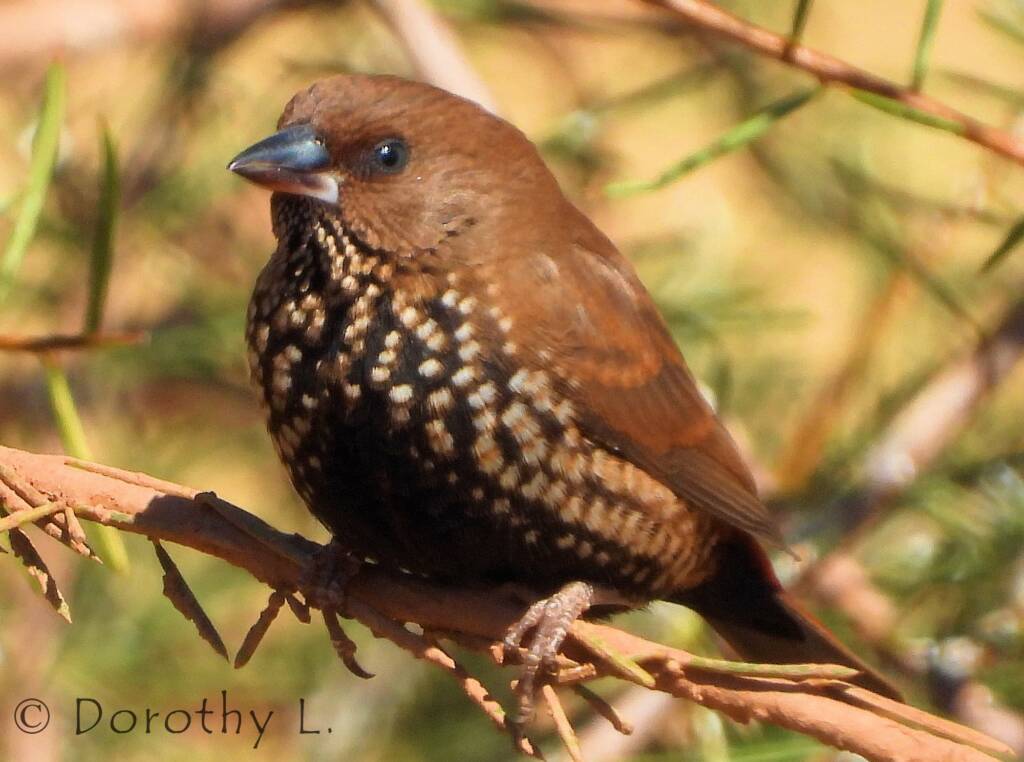
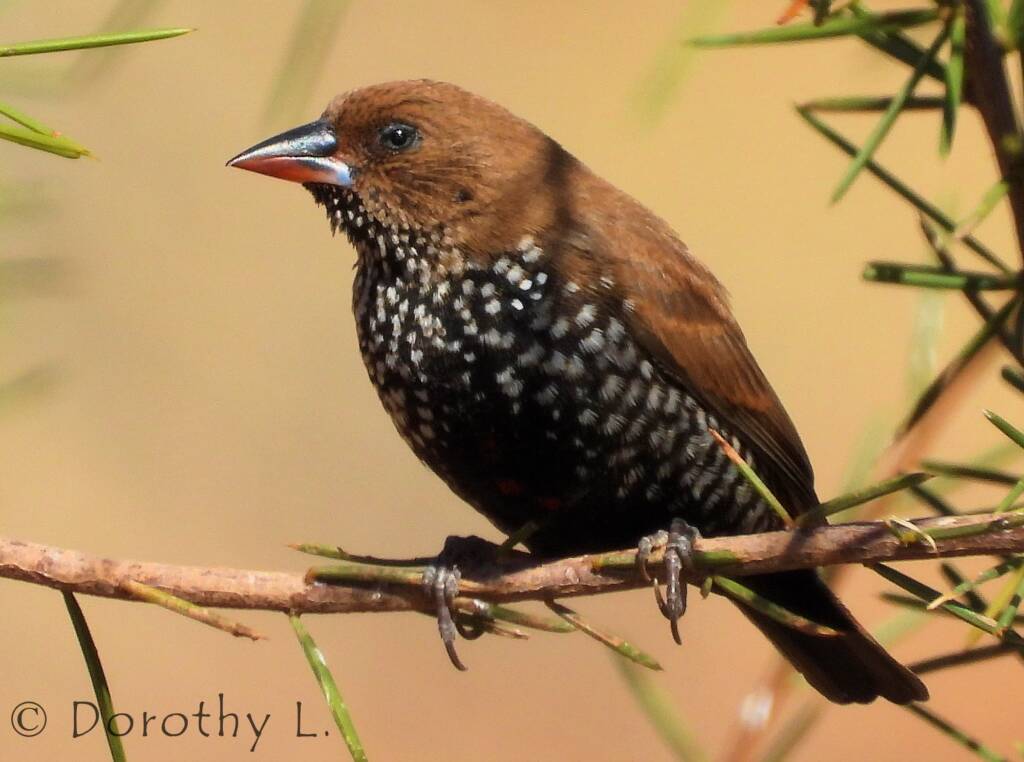
A popular captive bird, several colour mutations have been recorded, where the red markings are replaced, with pied, fawn, yellow, orange.
The males construct small, round nests that are close to the ground, usually with a wide entrance hole. The nest is constructed of twigs, roots, grasses and general plant material. The female add soft grasses and feathers.
The female lay a clutch of between 3 – 5 white eggs. Both parents will share the task of incubation. They can produce up to 3 clutches a year.
They feed mainly on grass seeds, mostly from spinifex (Triodia) species. Foraging on the ground, they will also eat fruit and blades of grass.
Common name
Painted Firetail Finches, Painted Finches.
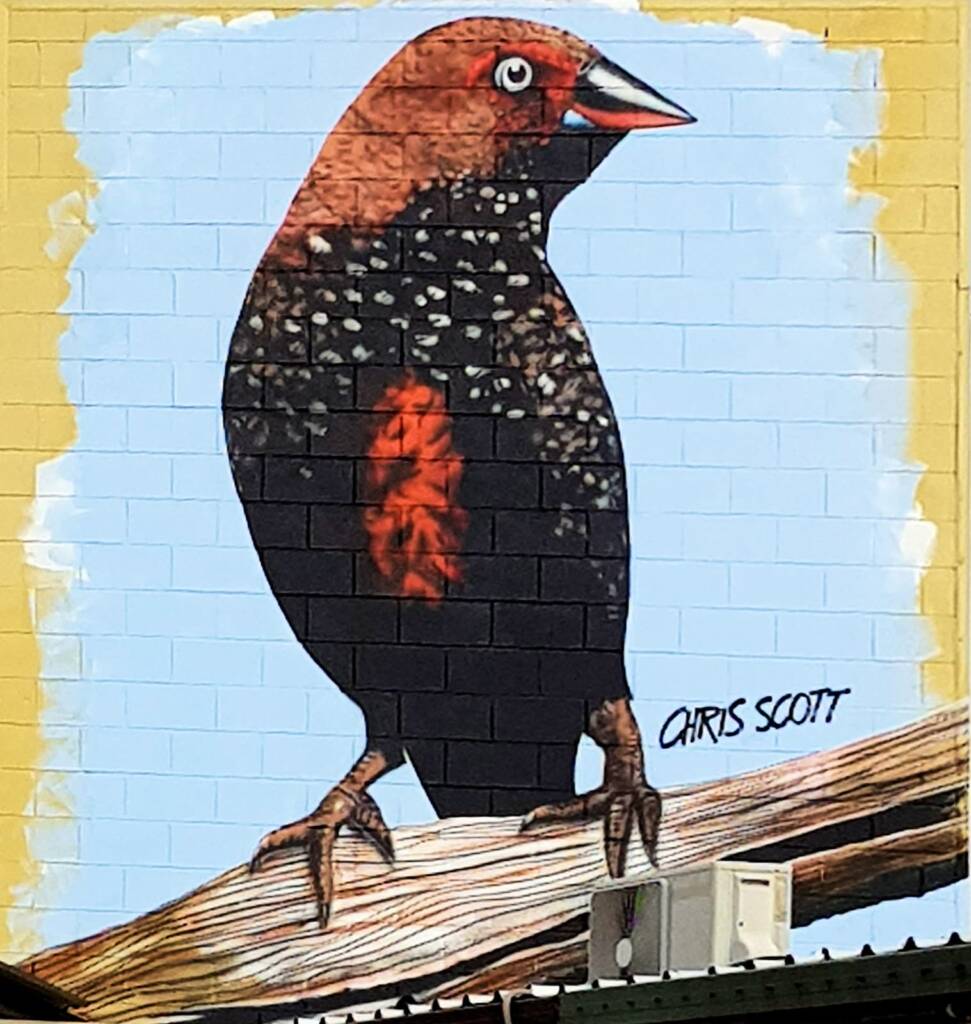
The Painted Finch is a popular bird with artists and photographers. In the middle of Alice Springs, there is a large Painted Finch by artist Chris Scott, which was painted as part of the Alice Springs Street Art Festival in 2018.
- Scientific classification
- Kingdom: Animalia
- Phylum: Chordata
- Class: Aves
- Order: Passeriformes
- Family: Estrildidae
- Genus: Emblema
- Species: E. pictum
- Binomial name: Emblema pictum

Painted FinchPainted Finch – mixed company Painted Finch – strike a pose Painted Finch – water
FinchesBeautiful Firetail Chestnut-breasted Mannikin Crimson Finch Diamond Firetail Double-barred Finch European Greenfinch European Goldfinch Gouldian Finch Long-tailed Finch Masked Finch Painted Finch Scaly-breasted Munia Zebra Finch

